This post contains product affiliate links. These are mainly on items/hotels/tours that I personally endorse & love. I may earn a small commission if you make a purchase, but at no extra cost to you.
Are you planning a trip to Japan? From where to go to, what to do and loads of other useful advice, this is my Japan two week itinerary to help you on your way!
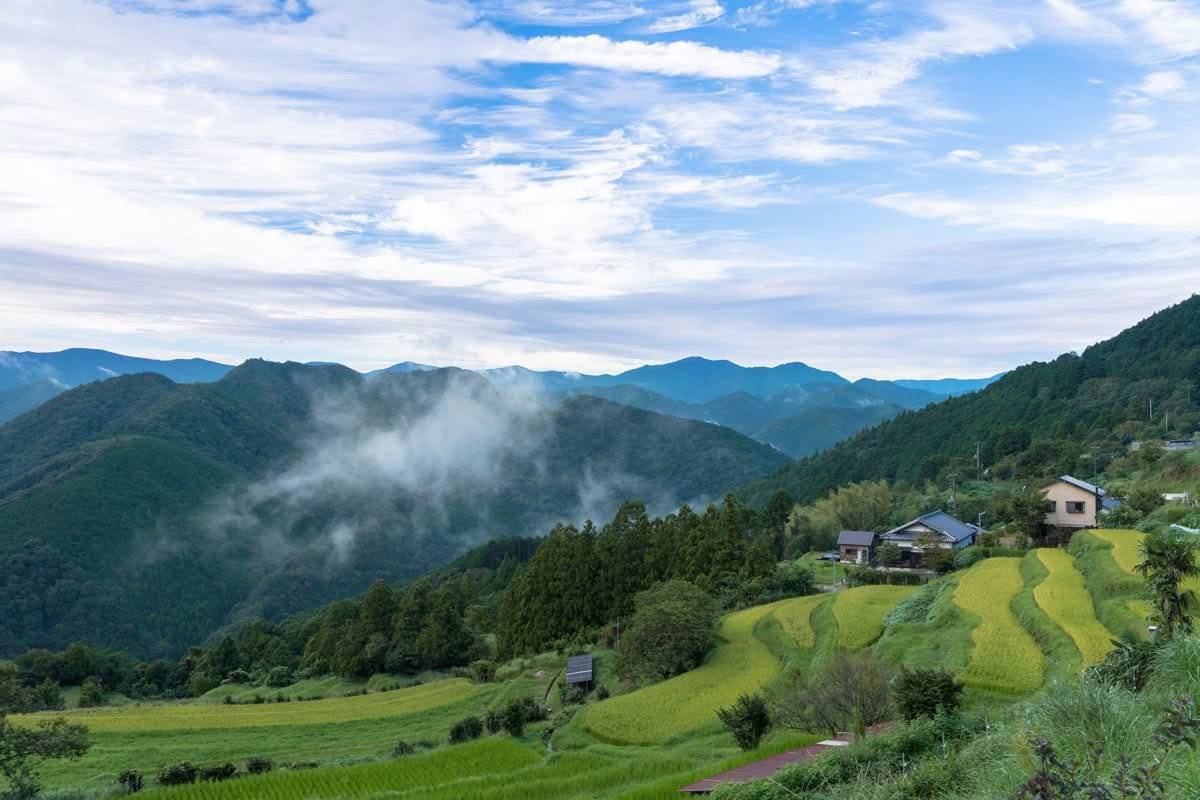
Beautiful, colourful, crazy, full on, fun, magical, stunning and everything else in-between. There really aren’t enough superlatives to describe somewhere like Japan.
I can’t tell you how long I’ve wanted to visit Japan for. Like a lot of people, it’s been at the top of my bucket list for years.
Everyone I know who’s been before has had the best time and I was so so so excited for this trip. When I saw my two week itinerary for Japan that excitement went up a few notches.
Let me say this now – Japan, you certainly didn’t disappoint.
I genuinely loved pretty much every second I was in Japan. I’m not just say that, I really mean it. It was confusing and challenging at times, but overall it’s an amazing place to travel to.
For those of you looking for some advice and information on where to go, what to do, how much it costs, and a load of other questions too, this is my Japan two week itinerary. I really hope you find it useful!
Contents:
Is two weeks long enough in Japan?
Yes and no.
I am not about to say that I’m an expert on Japan after spending two weeks there.
Truth be told, you can only scratch the surface of things to do in a country like Japan. In fact, I know people who’ve spent two weeks just in Tokyo and still haven’t seen everything.
Saying that, as an introduction, two weeks in Japan is perfect.
It’s enough time to get a really good understanding of the country and to see a few places.
Somewhere like Japan can be pretty full on, so it takes a couple of days getting used to the size of place, the language, the food, etc.
After that, it’s nothing but good times to be had!
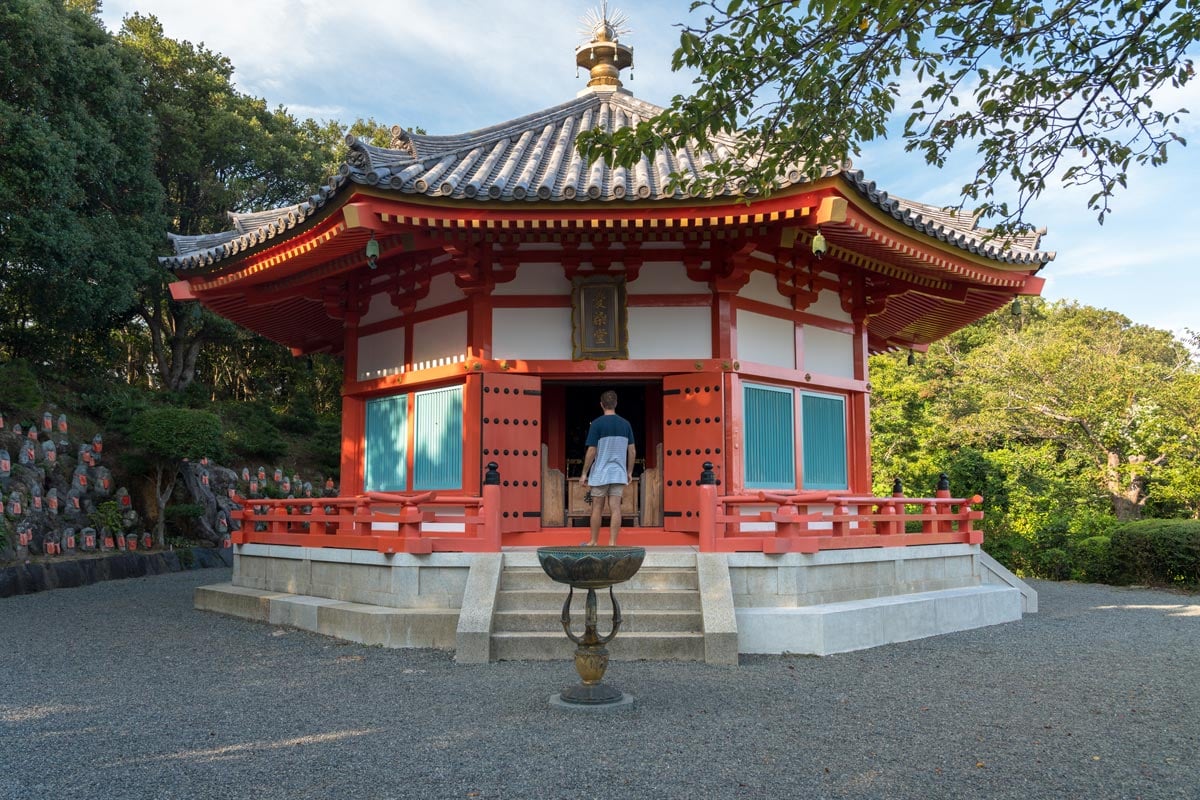
When is the best time of year to visit Japan?
So I visited Japan late August/early September which is NOT the best time to visit.
This is still during the summer which is very hot and humid. Also, there are lots of typhoons and changeable weather conditions during summer (we were actually in Osaka when the big typhoon hit at the end of the trip, so when they say it’s typhoon season, they mean it’s typhoon season).
It is considered that the best time to visit Japan is spring (March to May) and late autumn (September to November).
This is when the skies are clear, there’s little rainfall and the temperatures are nice.
Also, winner winner chicken dinner – spring and autumn are when it’s cherry blossom season and everywhere looks that little bit more beautiful.
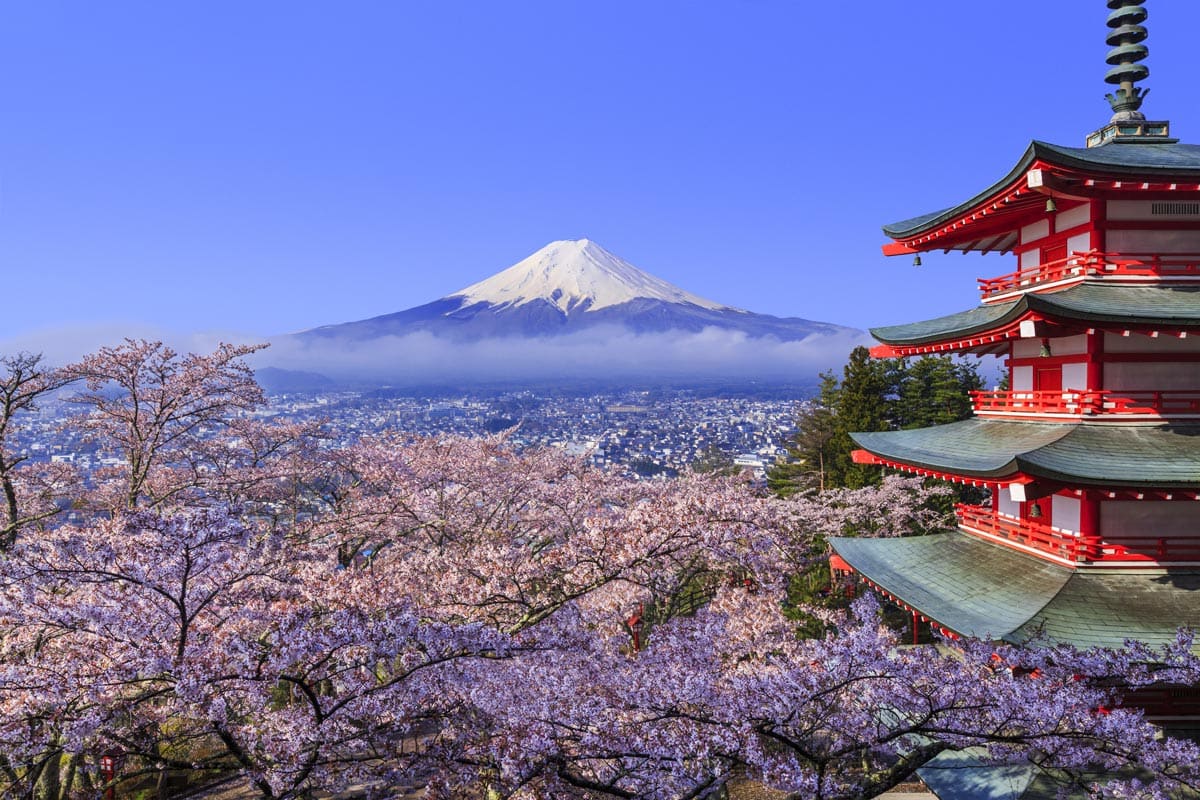
What’s the best way of getting around Japan?
While in Japan I got around by bus, car, cable car, metro, old-fashioned trains, super-fast bullet trains and on my own two legs.
One of the things I was really worried about before visiting Japan was how hard it would be to travel. I had day-dreams that I’d just be standing on a metro platform staring at Japanese characters not knowing where I was going.
However, Japan is surprisingly easy to get around these days.
Due to the Olympics in Tokyo2020, most major cities and tourist destinations are updating all their signs to include English, so it’s easy following these to wherever you need to go.
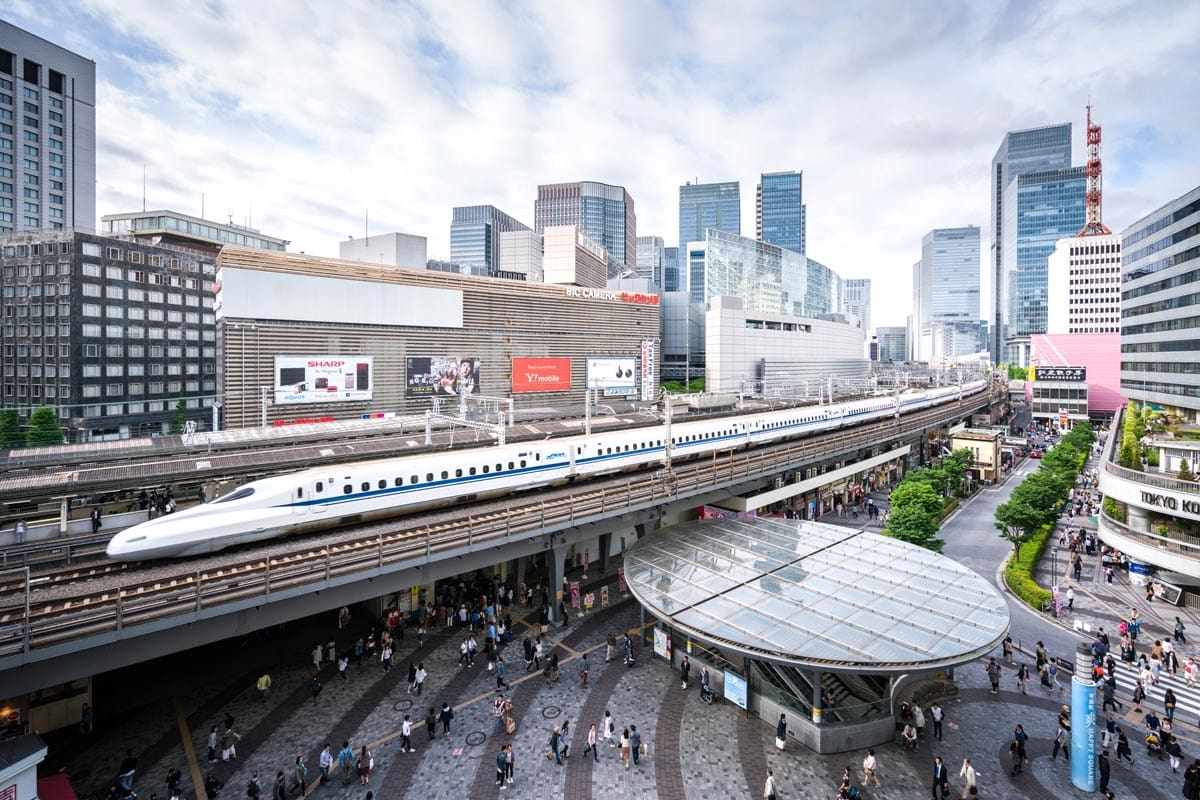
If you’re planning on visiting lots of places during your two weeks in Japan, I’d really recommend purchasing a Japanese Rail Pass (JR Pass) beforehand.
This gives you access to most of the trains on the JR network around Japan and it is a lot cheaper than buying individual point-to-point tickets.
Also, you can just rock up at the station and use your JR pass saving time and energy compared to buying a ticket before you travel each time.
There are three types of JR passes:
- 7-day pass – £196 (US£260)
- 14-day pass – £312 (US£413)
- 21-day pass – £400 (US£529)
Now I know over £300 sounds expensive on transport but it really is a great way of seeing lots of the country.
For my Japan two week itinerary I used my JR pass on 9 different occasions. Overall this was much cheaper than buying individual tickets, some of which are £50 for a 1-hour journey.
Also, for those of you flying into Tokyo, Osaka or Nagoya, you can pick up your JR pass at the airport so it’s super simple and convenient.
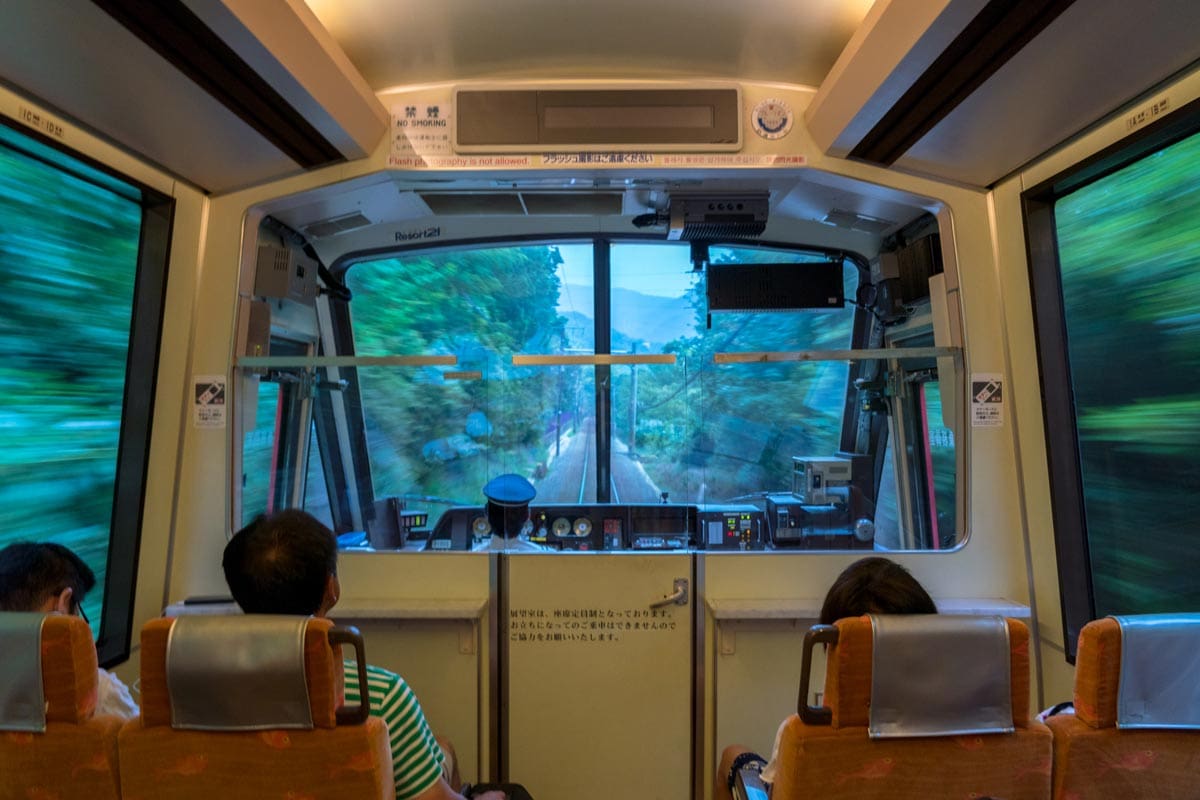
Accommodation in Japan: what is a ryokan?
There are two main types of accommodation in Japan – western style hotels and ryokans.
Obviously you’ll know western-style hotels – these aren’t any different in Japan apart from the fact the toilets which are just a super high-tech luxury. Also, some hotels will expect you to take your shoes off and wear slippers in the room as is Japanese custom.
Ryokans are essentially Japanese homestays/hotels and they are very traditional.
With a ryokan, usually a stay involves two meals too – dinner and breakfast.
Both of these meals are sumptuous banquets with multiple courses (the most I had was a 9-course dinner) and offer things like sashimi, hot-stone wagyu beef, and loads of other delicacies too.
Ryokans will also have onsen (hot springs) where you bath each day. At first I was a little apprehensive with public bathing but I found them such a peaceful and relaxing way to start the day.
Also, with ryokans, you don’t have a proper bed but you sleep on a futon in a minimalistic tatami mat room.
As I said, ryokans are very traditional and they’re such a fantastic insight into Japanese culture.
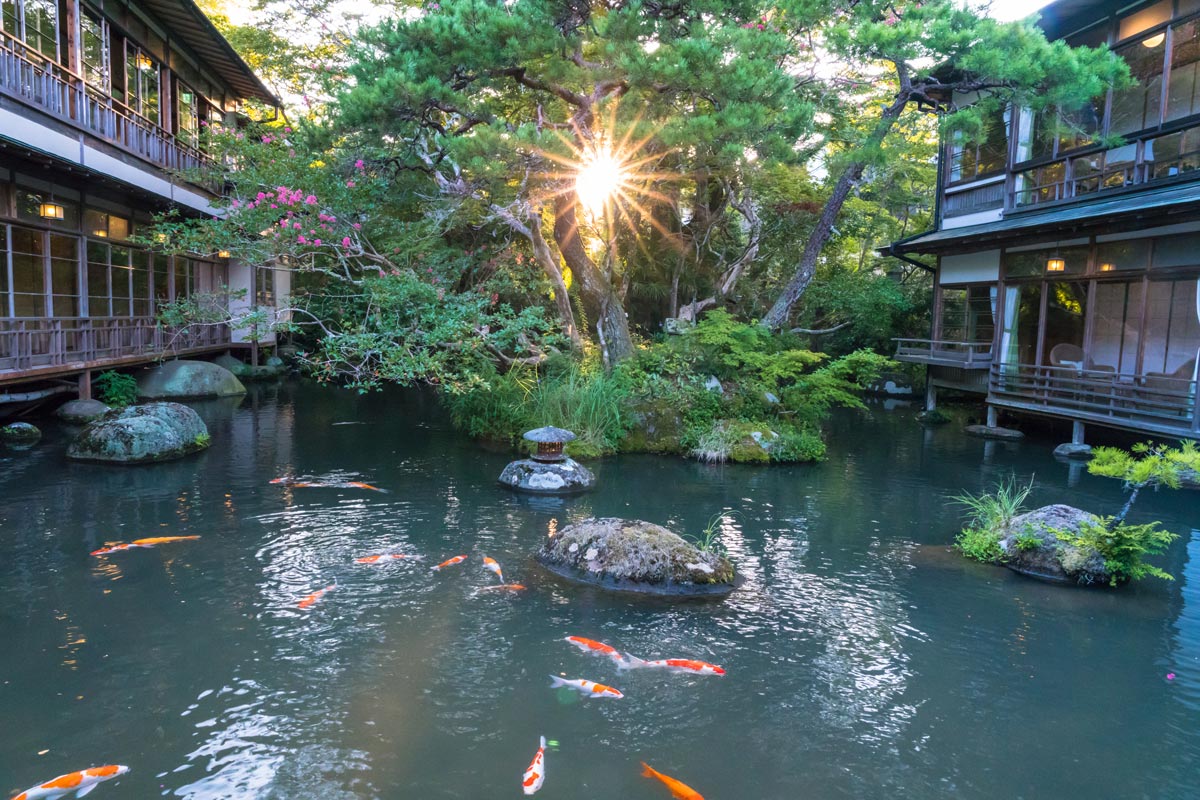
My two week itinerary for Japan
As I’ve already said, you’re not going to see all Japan has to offer in two weeks so it’s all about picking places you’re most interested in.
For me, I really wanted to travel around the peninsulas and explore the beautiful landscape.
A lot of people think of Japan as Tokyo, Osaka, Kyoto and Hiroshima, but there’s so much more to see than the cities.
I love hiking, so I was really interested in visit places like Wakayama where they have the Kumano Kodo, the holiest pilgrimage in Japan and a UNESCO world heritage site.
Also, the Izu Peninsula and the Noto Peninsula offer so much in terms of nature with stunning waterfalls, forests and beaches too – there really is so much to see here.
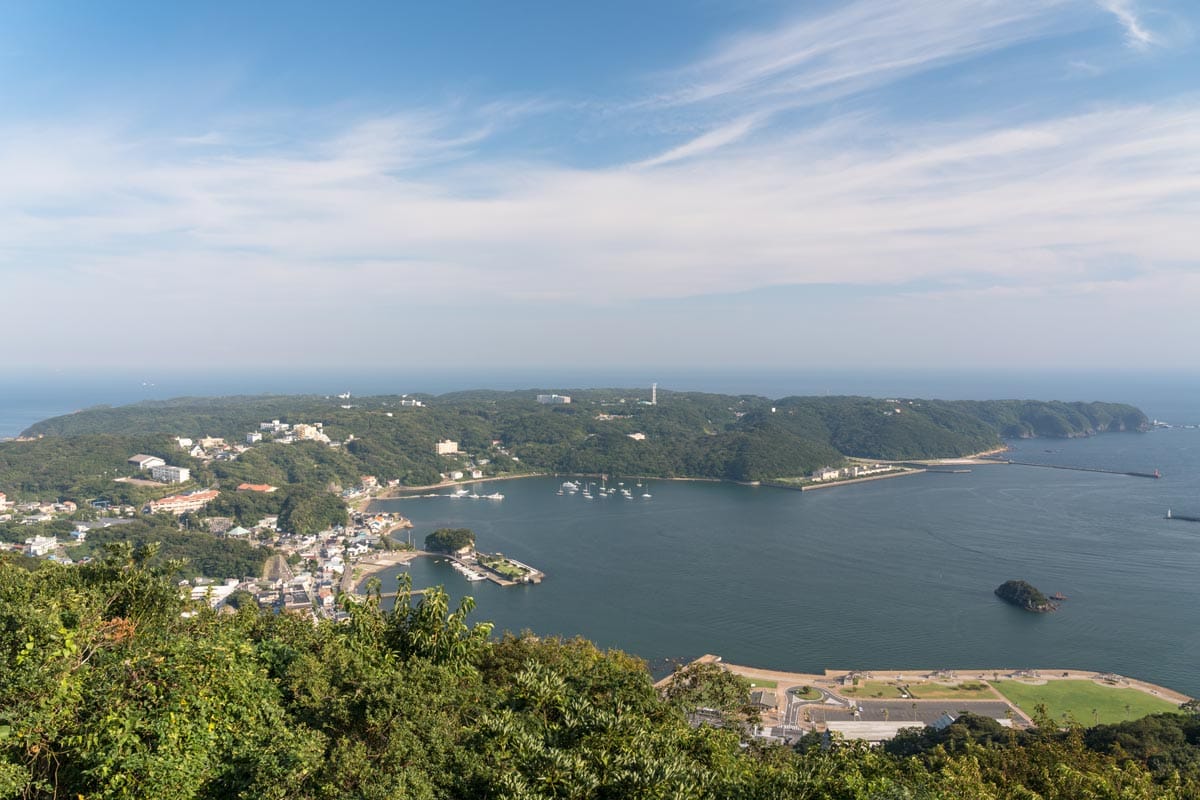
If you’re interested in a very different Japan two week itinerary, this is what I got up to:
- Tokyo – 3 days
- Izu Peninsula – 3 days in total
- Shuzenji – 1 day
- Shimoda – 1 day
- Atari – 1 day
- Noto Peninsula – 3 days in total
- Noto – 1 day
- Wajima – 1 day
- Kanazawa – 1 day
- Wakayama Peninsula – 3 days in total
- Takahara – 1 day
- Kushimoto town – 1 day
- Wakayama City – 1 day
- Osaka – 2 days
Tokyo – Days 1, 2 & 3
Tokyo is all about throwing yourself in at the deep-end and acclimatising yourself to Japanese culture.
It’s a crazy city with bright lights and millions of people, so it can be very full on a first. Take it slow, don’t try and see everything in a day and enjoy it!
Arigato Food Tour
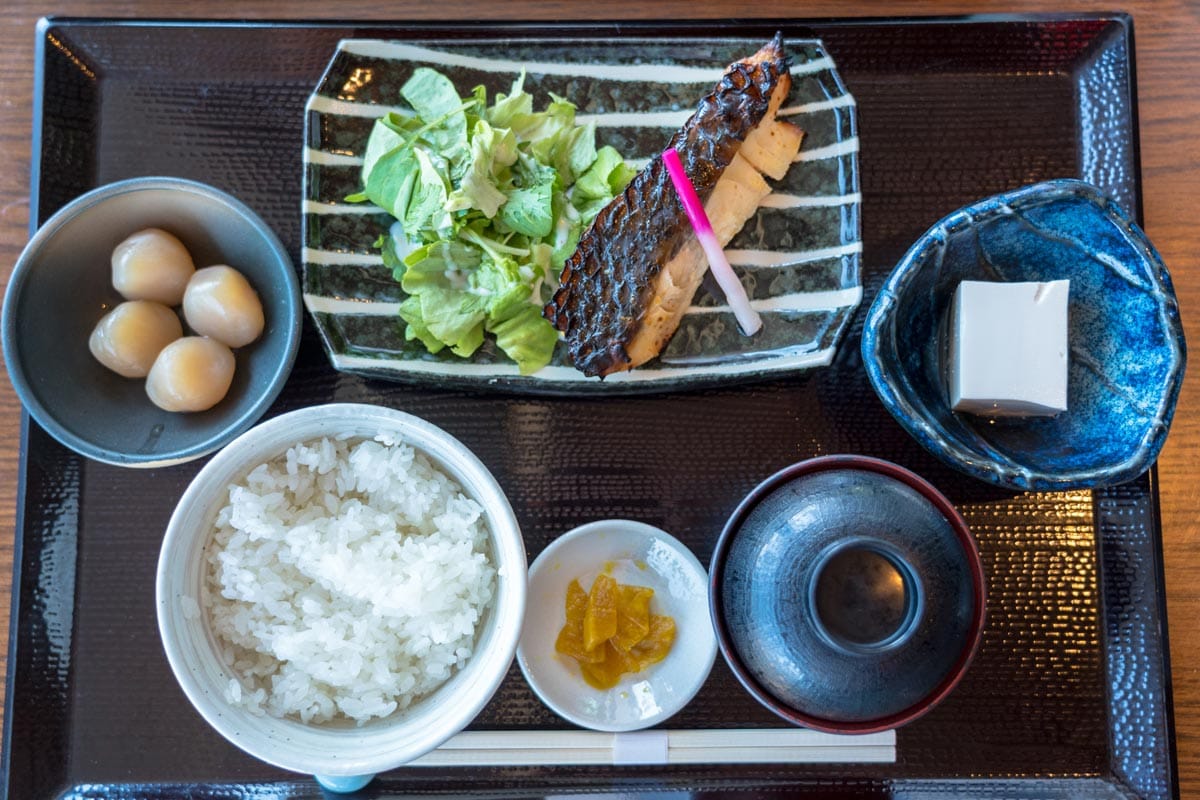
Whenever I get to a new place that I know absolutely nothing about, I usually go on a tour so I can learn from the locals.
For Tokyo I went on an Arigato food tour (you can get 5% off at Voyagin if you use the code ‘Maccainjapan’) around the Asakusa district. This was such a good introduction to Japanese culture through its cuisine.
Not only did I learn all about the etiquette of using chopsticks (and how not to cause offence!) but I tried loads of new dishes along the way too including a traditional Teishoku which is a common set-menu for lunch.
Having a Japanese tour guide was brilliant for getting the scoop on what’s hot in the city right now. I gave him a hefty tip at the end because I was incessant with my questions about Japan!
The tour finished at Sensō-ji, one of the most popular temples in Tokyo and an amazing place to wander around for an hour.
Find some amazing sushi or ramen
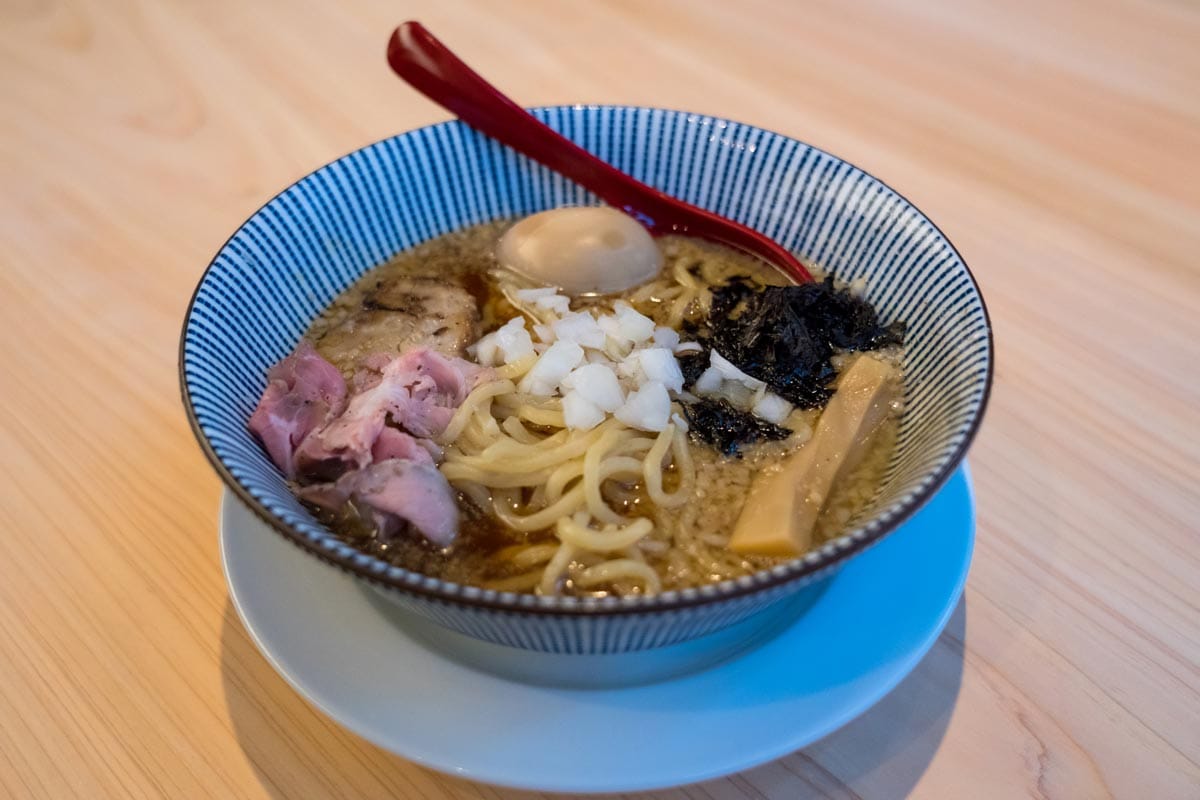
To be honest with you, after a long flight from London, I was still pretty tired on that first day but I only had one thing on my mind – food.
One of the reasons I was so excited to visit Japan was all the delicious dishes like sashmi and yakiniko. So, my first day I had two of my favourites – sushi and ramen.
Nothing can quite beat that first bowl of ramen and it was absolutely delicious on every level. I’d definitely recommending finding a bowl on your first day in Japan.
Harajuku district
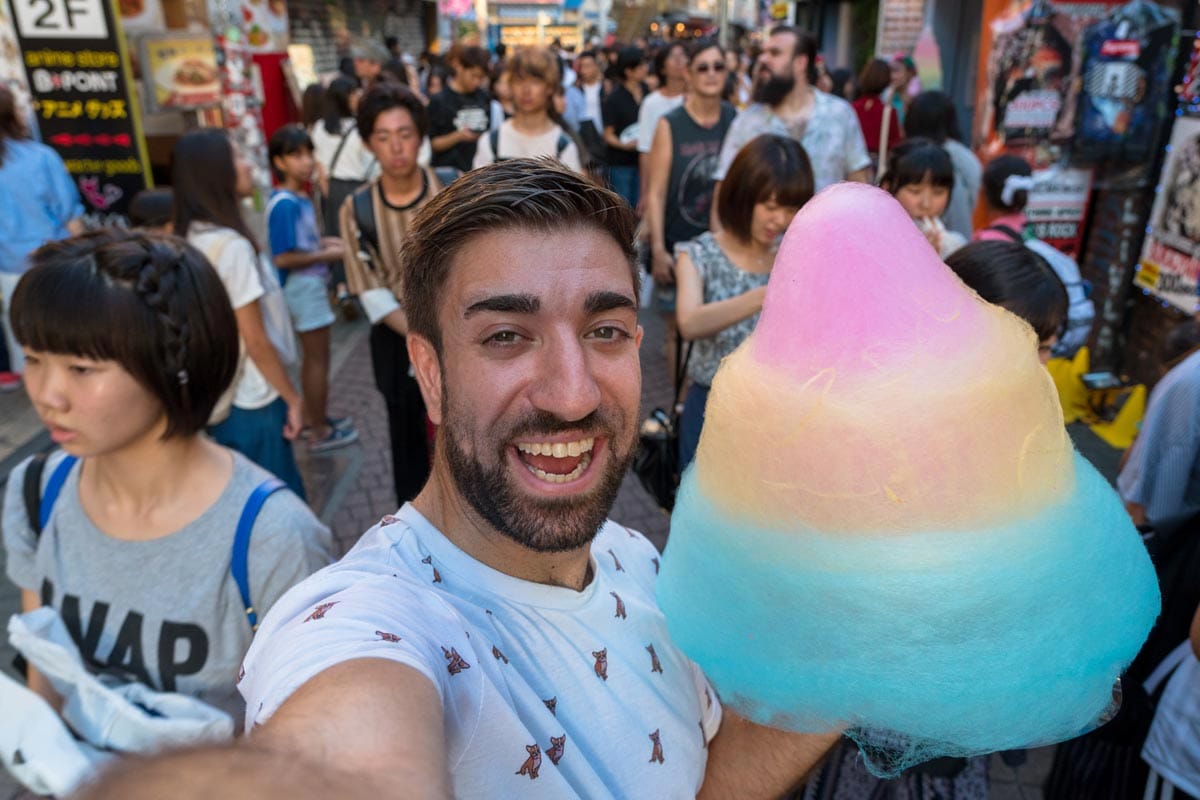
Have you heard about the owl café? Or the puppy café? Or the monster café? The lizard café?
I could go on and on here, but all the quirky cafes are found in Harajuku. In fact, all the quirk things are found in Harajuku including giant rainbow candyfloss and anime fashion.
For Harajuku, I’d really recommend walking around taking it all in. It’s just one of those very Japanesey places that you have to experience. Oh, and the candyfloss is actually great.
Please note: I stuck my head into the owl café to see what it was like and I found it quite uncomfortable and off putting. All the owls where chained to posts and were in a very small room. Even though they say they’re animal friendly or that they rehabilitate animals, a lot of the cafes have been called out on their cruelty to animals so really think twice before visiting these places and spending your money there.
Robot Restaurant
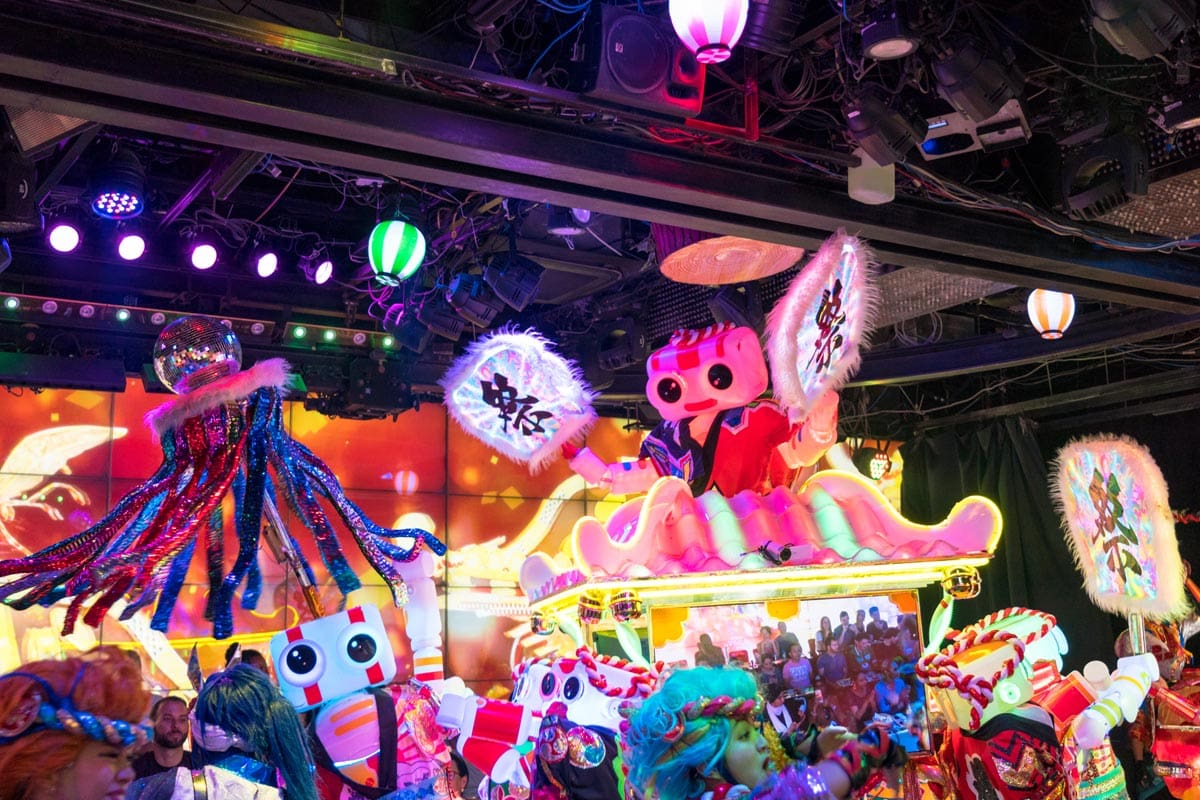
If you haven’t heard of the Robot Restaurant before it’s basically like a real-life Japanese computer game with giant robots roaming around everywhere. Add a lot of booze and it’s an incredible night out.
The Robot Restaurant is always voted as one of the best things to do in Tokyo and it was a crazy night. I couldn’t believe the sheer scale of the show and it’s everything that makes Japan great.
It’s quite hard to describe the Robot Restaurant – you can get more of an idea in my blog post – but I’d really recommend it if you’re looking for a fun night out.
You don’t have to eat there but you do need to book tickets beforehand.
Tokyo Transport
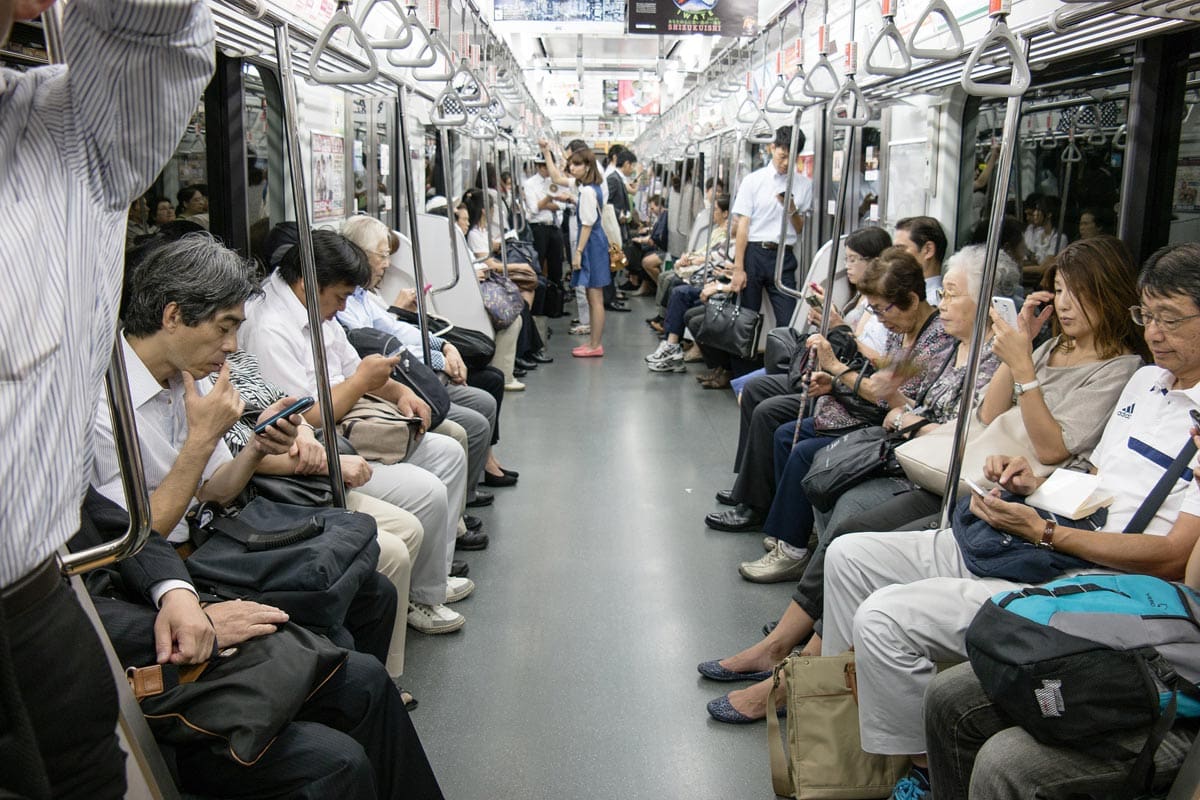
Getting around Tokyo can be confusing at first but once you’ve got the first journey under your belt you’ll get used to the system.
Unfortunately the JR pass doesn’t cover the metro system in Tokyo so you have to get individual tickets.
All the Tokyo underground stations have WiFi, so I found the best way to work out where I was going was on Google Maps. Not only did that give you the specific line and colour, but it also gave you the ticket price.
Then, on the ticket machines, you can select your ticket price and it tells you how much money you need to pay. You’ll then get a small ticket that’s valid for one journey.
A word of warning, the underground stations are massive in Tokyo so always factor in a lot of walking wherever you’re going. At times I was walking for 10/15 minutes all underground.
Places to stay in Tokyo
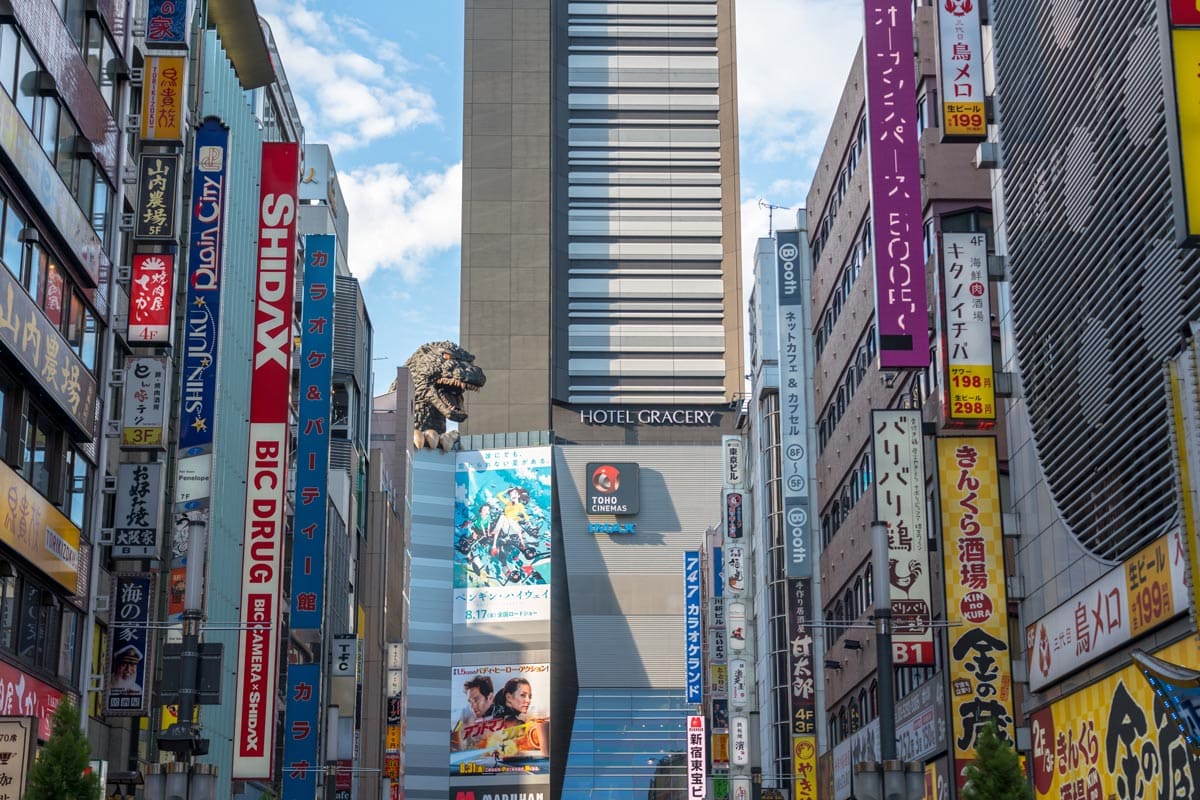
In Tokyo I stayed in the wonderfully bizarre Godzilla Hotel in Shinjinku. That’s the one with Godzilla hanging off the side of the building! Mental.
Shinjinku is one of the most popular areas to stay in in Tokyo. There are loads of shops, restaurants and bars in the area. It’s also where you’ll find things like the Robot Restaurant and a few other activities too.
Another area very popular in Tokyo is Shibuya. You know the famous giant crossing from all the films and photos? That’s Shibuya.
Here are few hotels to stay at in Shibuya:
You can find the best hotels in Tokyo here.
Izu Peninsula – days 3, 4 & 5
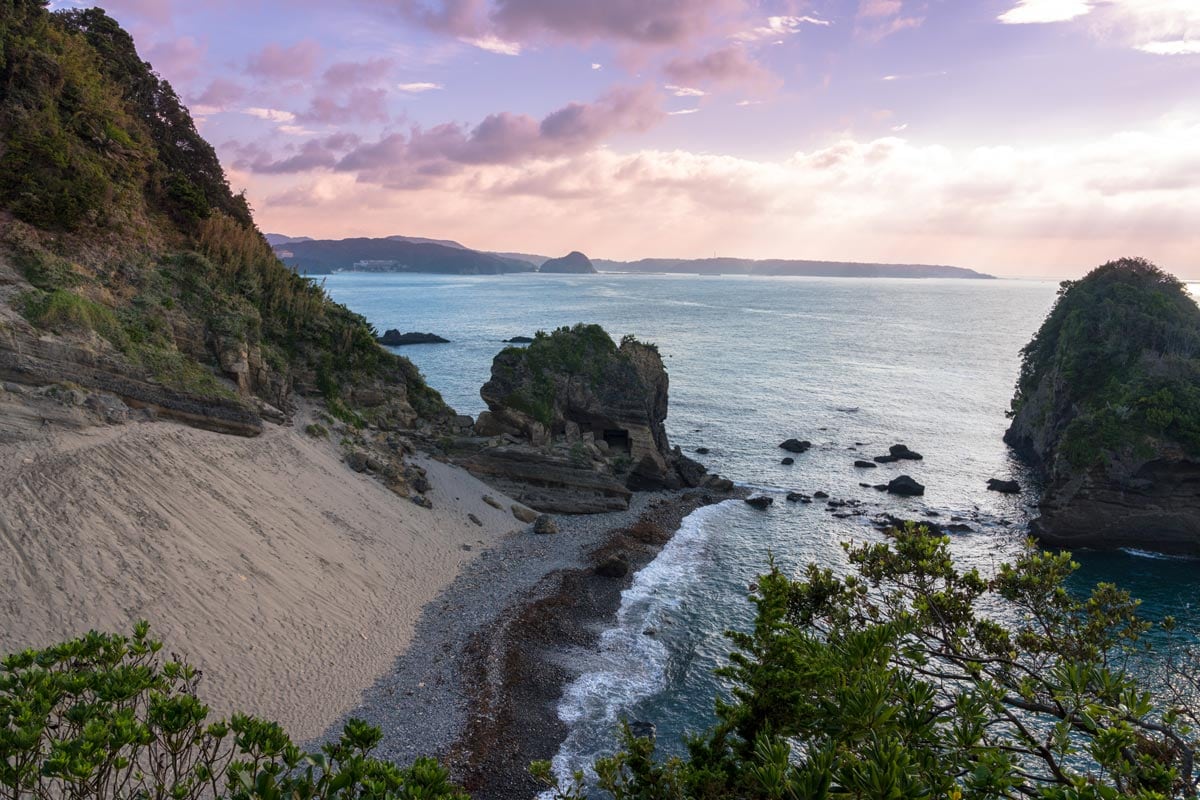
The Izu Peninsula is only an hour south of Tokyo and it is packed full of traditional towns, beautiful nature and fascinating history too.
Towns like Shimoda are where Commodore Matthew Perry first opened the doors to Japan with the rest of the world for trade in 1855, and it’s considered this place has huge significance in Japan coming out of it’s isolation in the world.
Also, in terms of nature, places like Mt Omuro, a perfect green volcano in the heart of the Izu Peninsula, are well worth visiting too.
Shuzenji
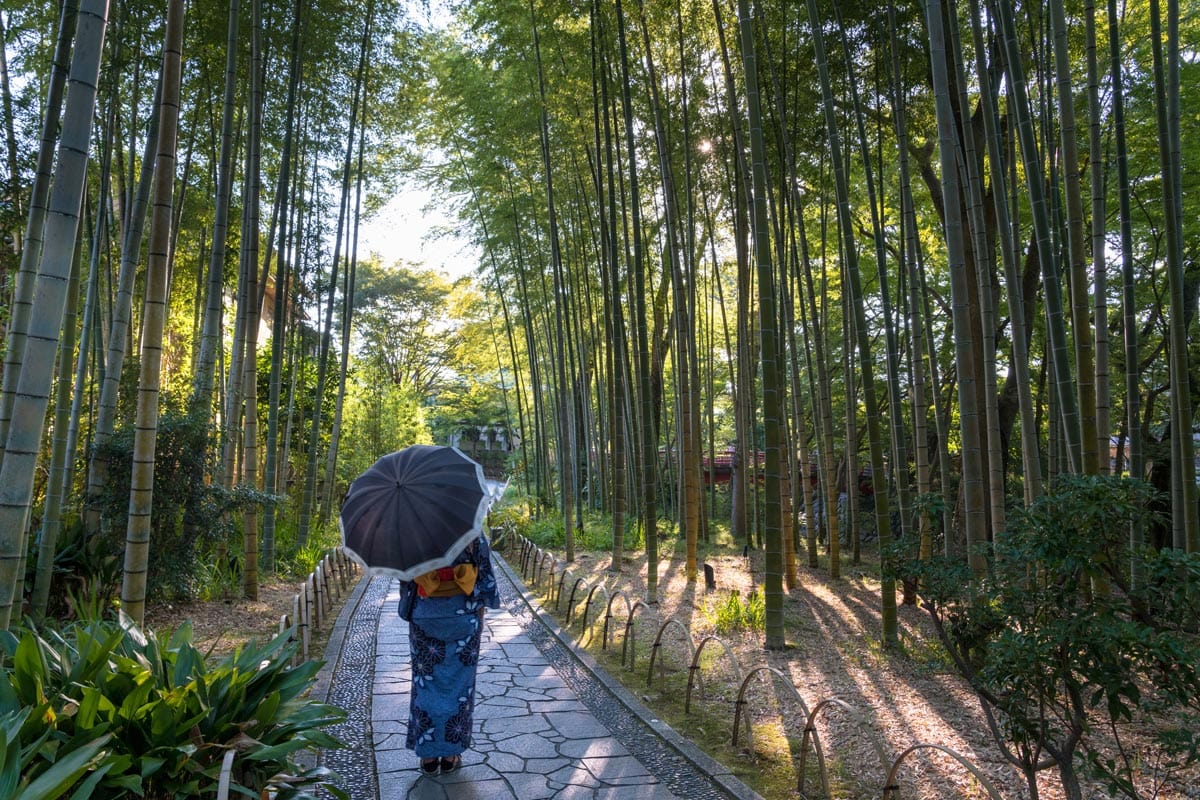
The first place I visited in Izu was Shuzenji, a very traditional town with natural onsen (hot springs) dotted all over the place.
Shuzenji is famous for its temple nestled in the trees and people come from all over to pay homage here. When you see if you’ll see why.
One of the best things to do in Shuzenji is walk from the temple to the bamboo forest taking in the two. Also, I really recomment buying an ice cream and dipping your tired feet into the natural onsen – such a good way to rest your weary feet after a long day.
In Shuzenji I stayed in my first ryokan, a very traditional Japanese homestay/hotel. Even though I stayed in a few different ryokans during my two week trip, I think Arai Ryokan was my favourite for the views alone.
Where to stay in Shuzenji – Arai Ryokan
Kawazu Seven Waterfalls
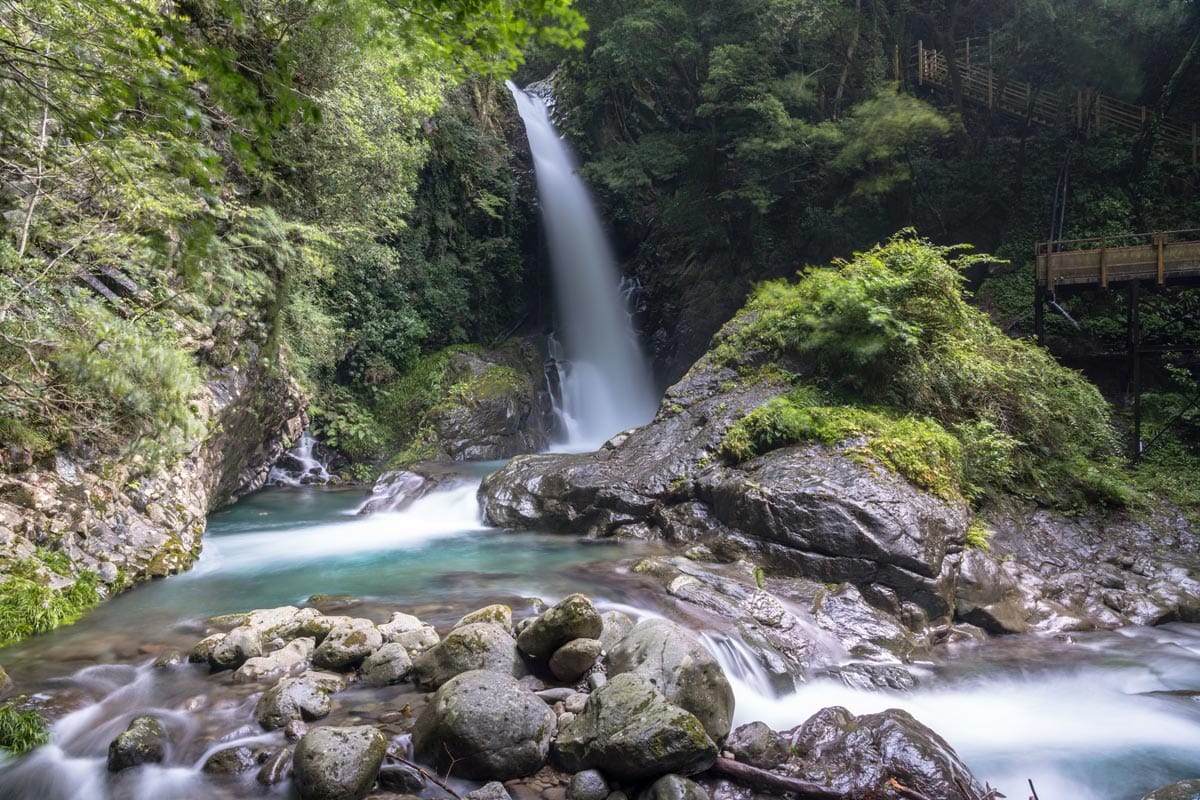
If there’s only one thing you do in the Izu Peninsula, make it the Kawazu Seven Waterfalls.
These might be up there with the most beautiful waterfalls I’ve ever seen. That could have something to do with the onsen at the very bottom of them though!
Kawazu Waterfalls is one of the places I was really keen to go hiking. Starting at the top, it takes about two hours of slow walking along easy trails to make it to the bottom. By no means a difficult hike but the views along the way are just so beautiful. This is why I wanted to visit Izu!
If you’re looking to wash off the sweat and freshen up, the onsen at the bottom of the waterfalls costs 2,000 yen (£13) and you need to bring your own swimming costume. Again, the views here are just incredible.
Where to stay in Shimoda – Hotel Izukyu
Jogasaki Coast
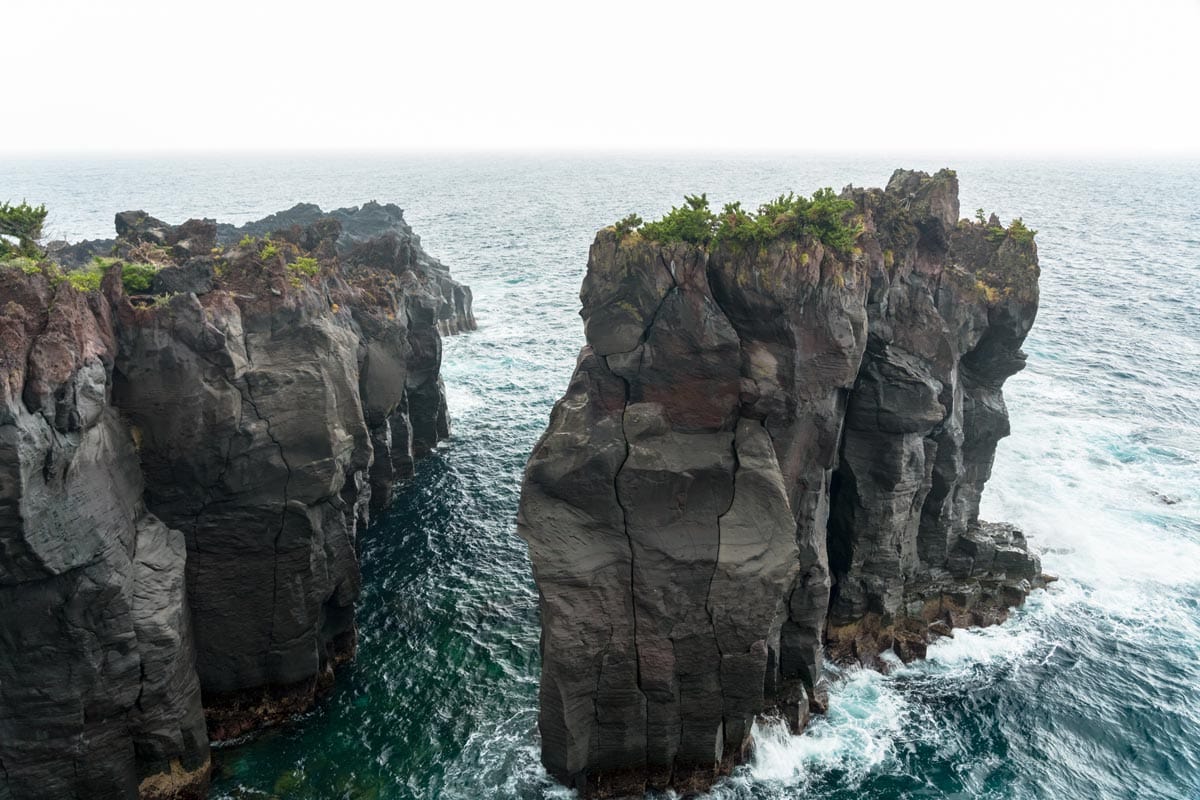
When I said the Izu Penuisula was known for its beautiful nature, this is another example of that.
The Jogasaki Coast is a really rough and rugged section of coastline in Japan with black lava cliffs dropping off into the ocean. It’s very desolate and unlike anywhere else I visited in Japan.
The most popular spot at the Jogaski Coast is the Kadowakizaki Suspension Bridge where you get the best views of the coastline and the lighthouse too.
There’s also a hiking trail here taking you along the coast so I’d really recommend that too – a great way to see more of the coast.
Where to stay in Atami – Hotel New Akao
Noto Peninsula – days 6, 7 & 8
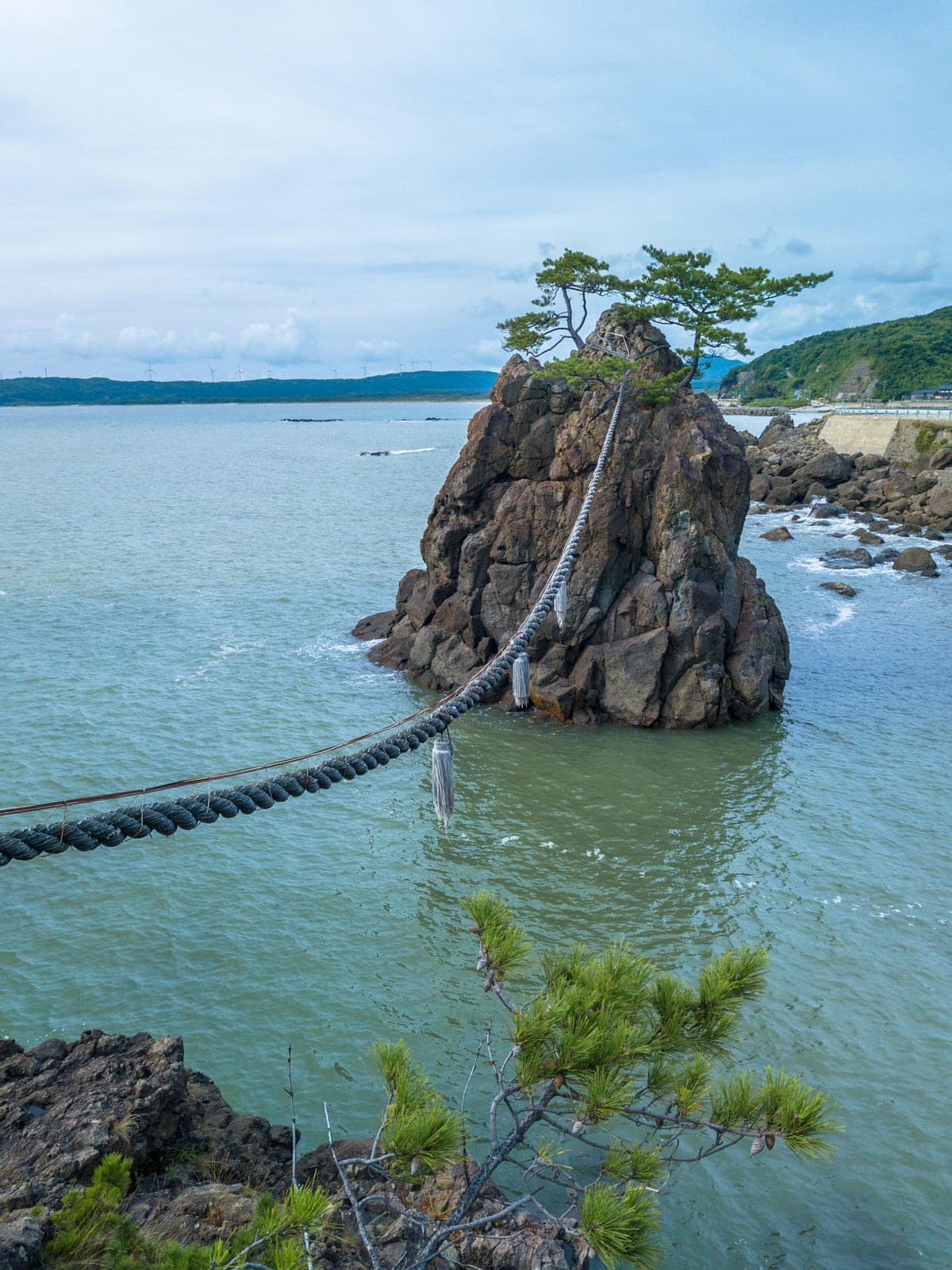
To get from the Izu Peninsula to the Noto Peninsula, I travelled from Atami back to Tokyo on the bullet train. I then changed to the Kagayaki 509 service arriving into Kanazawa station.
As I wanted to explore a lot of the Noto Peninsula and as public transport is fairly difficult to get around here, I had a car for three days.
To be honest with you, I loved having a car as if gave me so much flexibility with where to go. It also meant I could stop off at the side of the whenever I wanted to take pictures!
Learning calligraphy
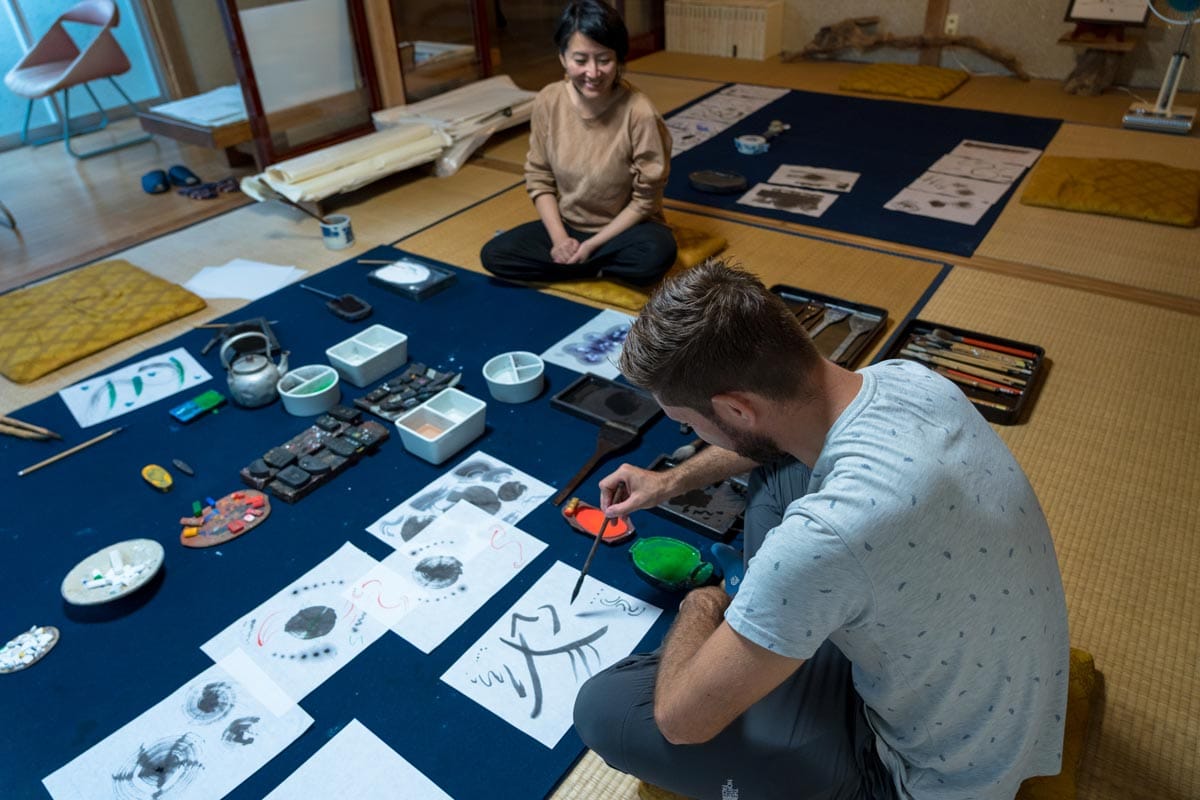
One of the activities I did while in Noto was learning the ancient Japanese art of calligraphy.
My teacher for the day was Ayane Muroya and she went through the principles of calligraphy and how it’s used in Japanese culture.
Ayane teaches a very unique type of calligraphy called Jojoo calligraphy. This is on the principle that there’s no “right” way of doing something; it should be a feeling.
Basically, that means you can draw what you want and it’s all good – definitely my style of art!
If you’re looking for a cultural activity to do while in Japan then I’d really recommend calligraphy as it gives a great insight into Japanese culture while learning a new skill at the same time.
Where to stay in Noto – Hyakurakuso ryokan
Battleship Rock
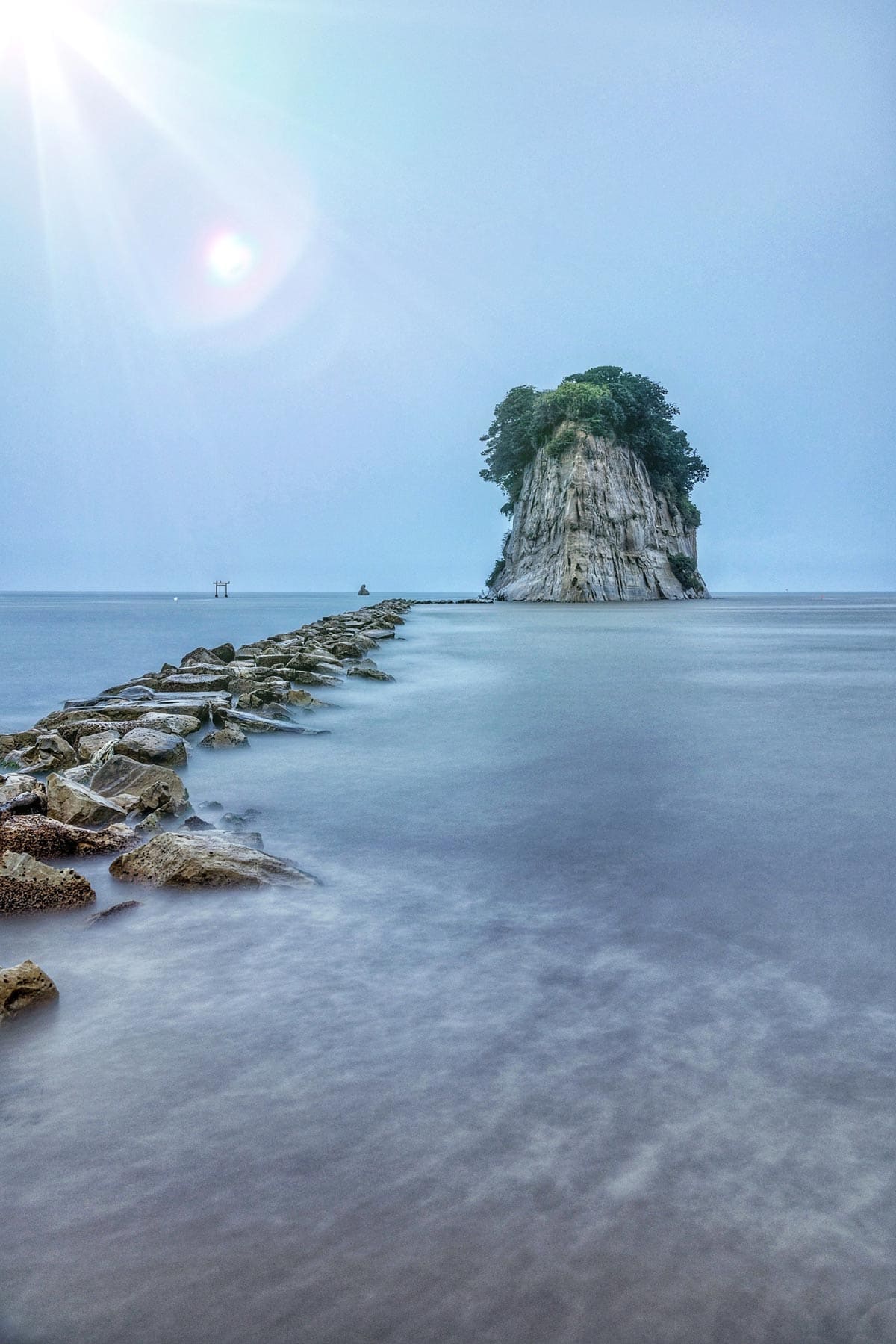
One of the photos I really wanted to capture while in the Noto Peninsula was Battleship Rock.
What I loved about having a car was being able to stop off at different places along the coast line – Battleship Rock was one of them!
As the name suggestions, this rock looks like a huge battleship that’s just off the coast. There’s also a lovely beach here and a cafe too if you’re looking for a place to relax for a few hours.
Gojinjo drumming at Wajima
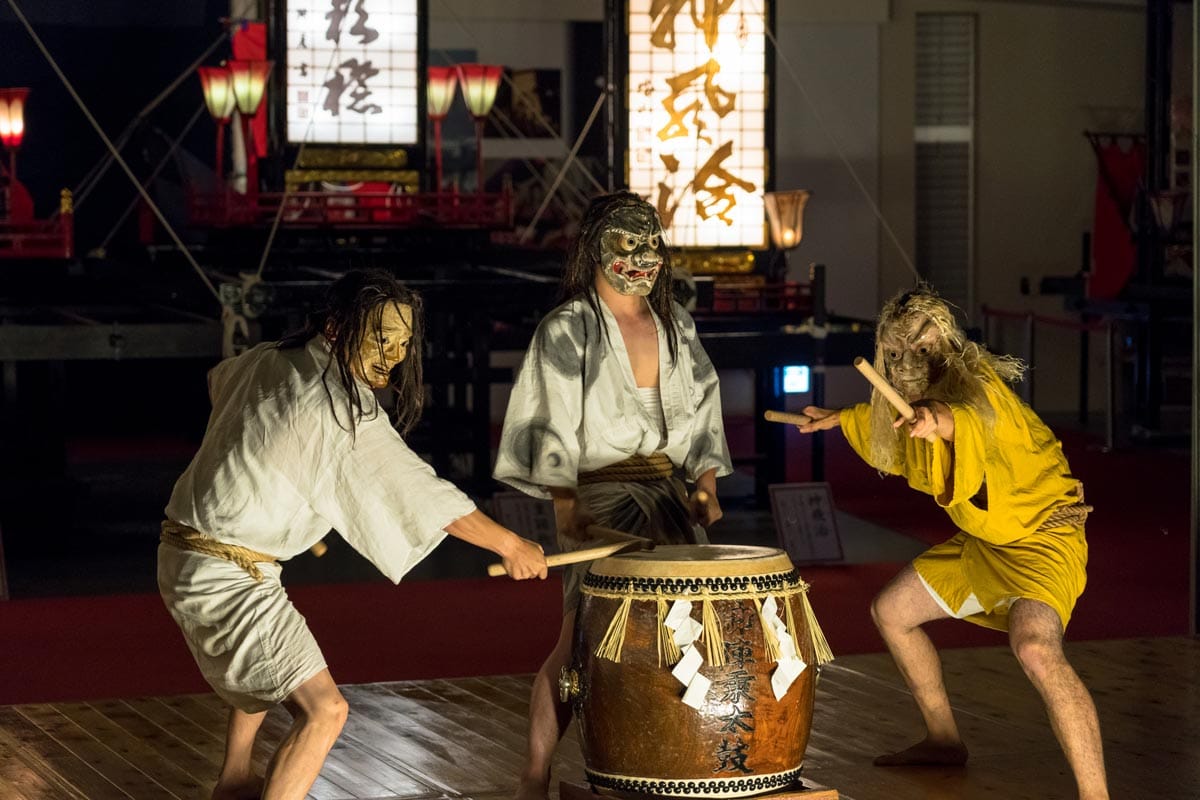
The little town of Wajima is the perfect place if you want to pick up some ceramic bowls and chopsticks! Oh, and dried fish. All the dried fish you’d ever want.
However, there’s more to Wajima than bowls and fish. This town is also famous for Gojinjo drumming, a unique style of drumming found in the Noto Peninsula.
Legend has it that in 1578 an invading army that attacked Noto was driven away by masked fishermen beating their drums. Apparently they didn’t have any weapons but the army were so frightened of these demonic masks and the sound of the drums that they fled.
Ever since, Gojinjo drumming has been celebrated in Noto and there’s a performance every evening that’s well worth seeing. The performance is like nothing else I’ve seen before and was a surprise highlight in my Japan two week itinerary.
Where to stay in Wajima – O-yado Tanaka ryokan (Japanese website only; sorry!)
Kanazawa
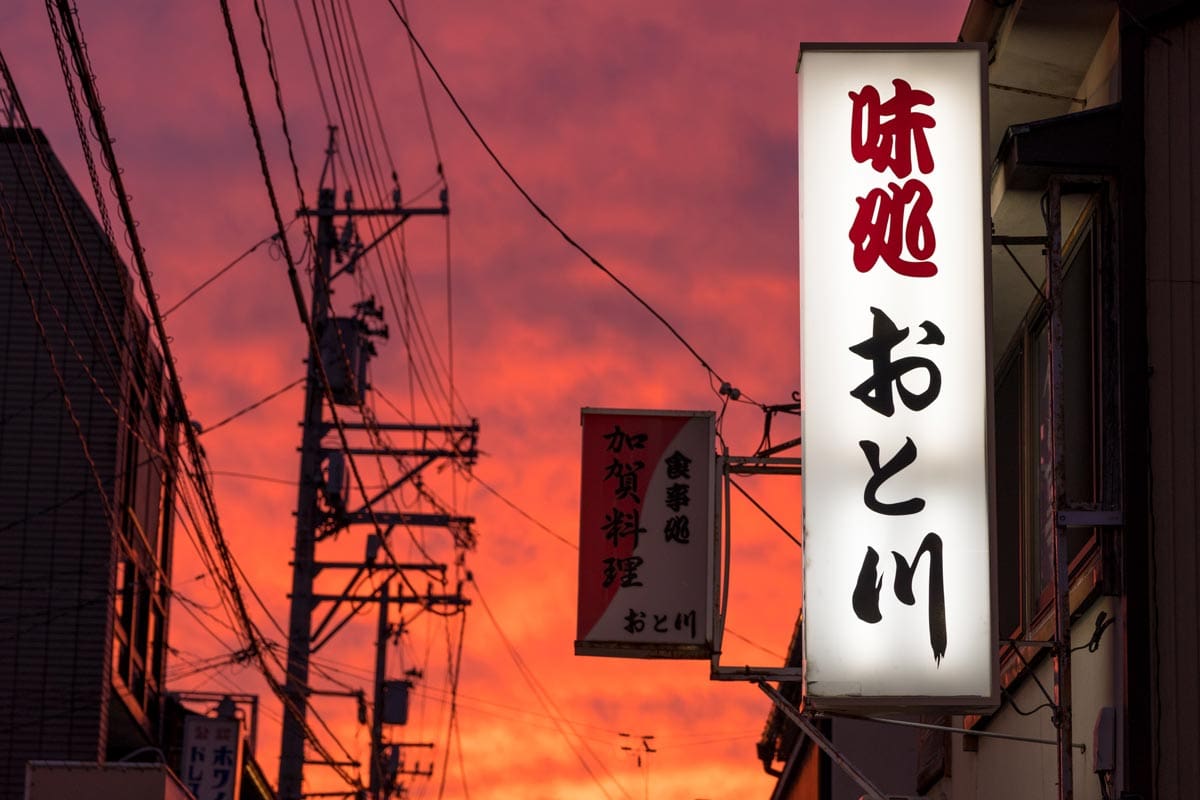
I wish I had a lot more time in Kanazawa; it’s seemed like a really cool city and one evening was definitely not enough.
The one place I wanted to check out was the castle lit up at night. On some evenings they have a free light show and it’s a great way of seeing the castle without having to buy a ticket.
Kanazawa also has a really bustling night scene with loads of bars and restaurants to choose from. I spent the evening wandering around from place to place trying out a few bars along the way. There are some great rooftop bars too perfect for sunset.
Some of the bars in Kanazawa have a cover charge of 500/600 yen. This is because they’re really small bars with only up to 12 seats. As turnover isn’t high, they need to make sure you either pay a bit more upfront or encourage you to stay longer! I’d really recommend trying one of these though as they’re very different to what you’d find back at home!
Where to stay in Kanazawa – Hotel Trusty Kanazawa
Wakayama Peninsula – days 9, 10 & 11
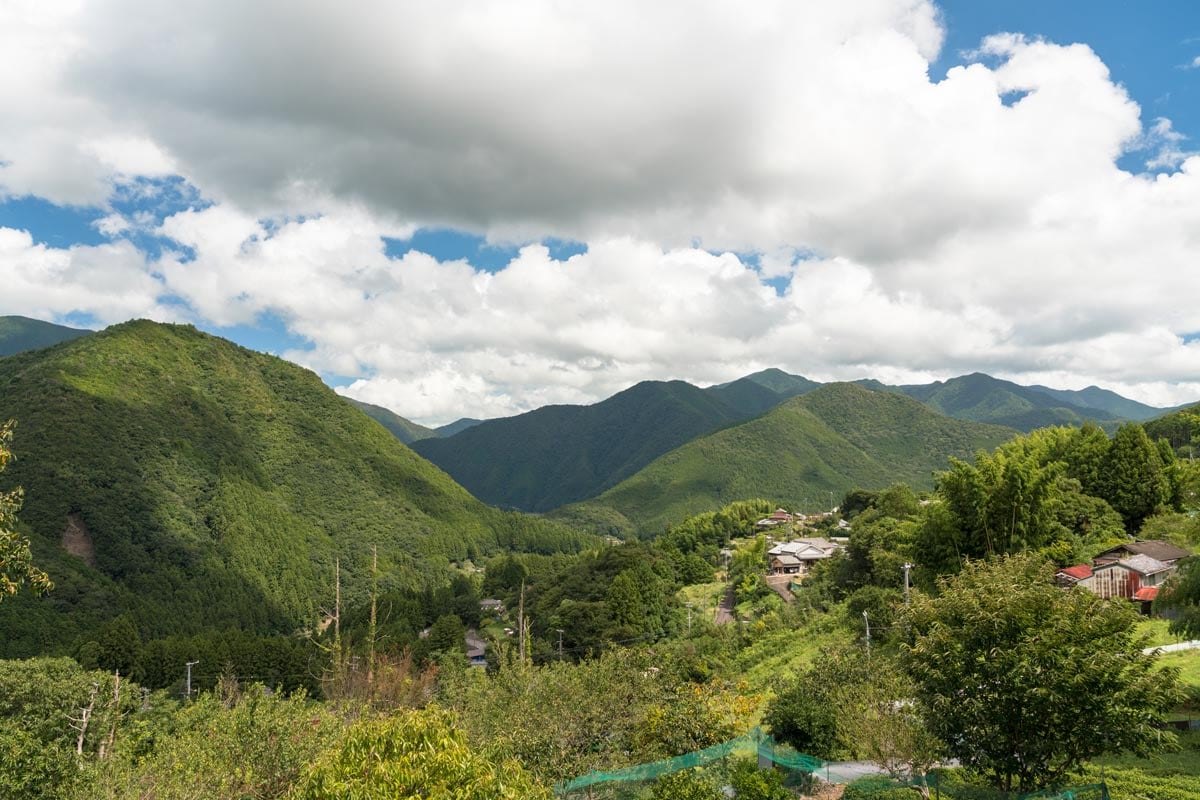
Wakayama is famous for gorgeous rolling mountains, rugged hiking trials and beautiful beaches too. I don’t want to say it has it all, but it kinda does.
One of the reasons I was so keen on visiting Wakayama was the Kumano Kodo. This is a world-famous pilgrimage and really is one of the best things you can do here – if it’s not already on your radar is should be.
Yuasa Soy Sauce Company
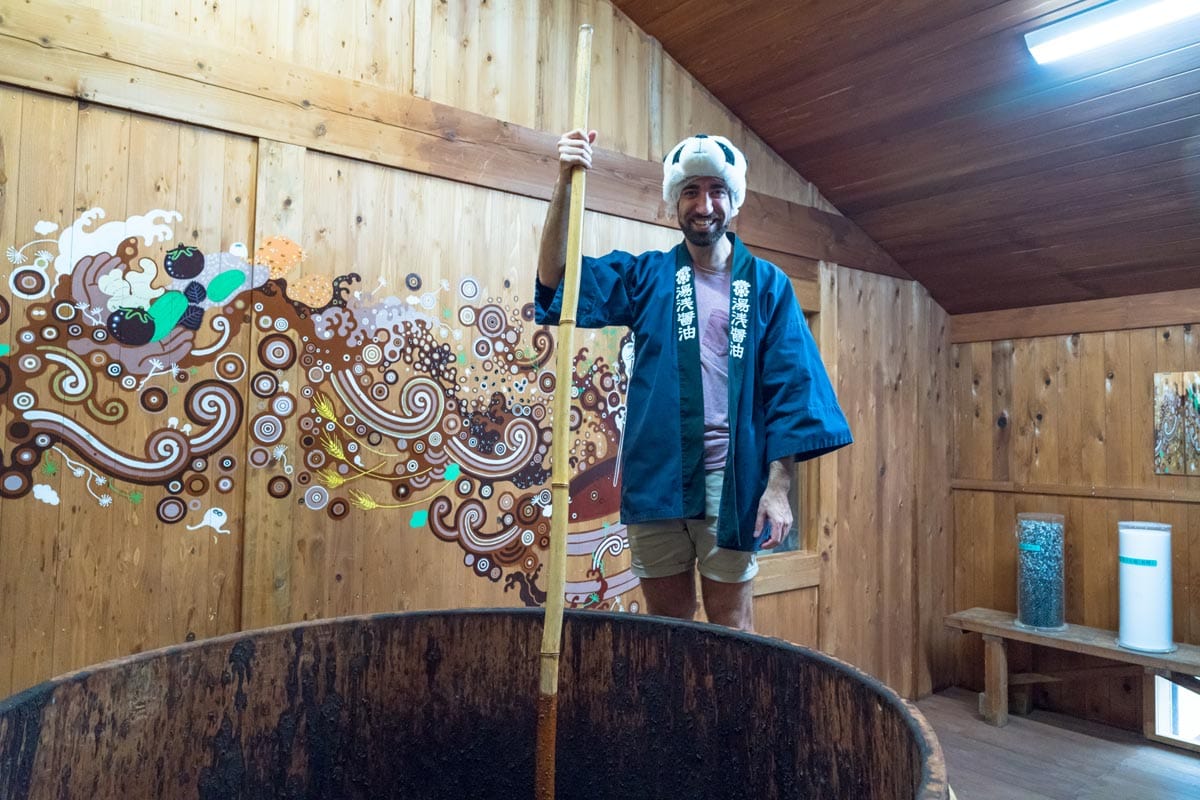
It might seem a little strange putting in a tour of a soy sauce company as one of the top things to do in Wakayama but I actually really enjoyed it here, much more than I thought I would.
Not only do you learn how to make soy sauce (genuinely fascinating), you also get to taste all the different flavour combinations too. Yum.
One of the reasons this place is such a pull though is because they sell something very interesting – soy sauce ice cream. And it’s delicious!
It’s a bit like salted caramel and for an extra salty hit you can drizzle on fresh soy sauce. Just think of it as Japanese chocolate and it’s actually really tasty.
Takahara
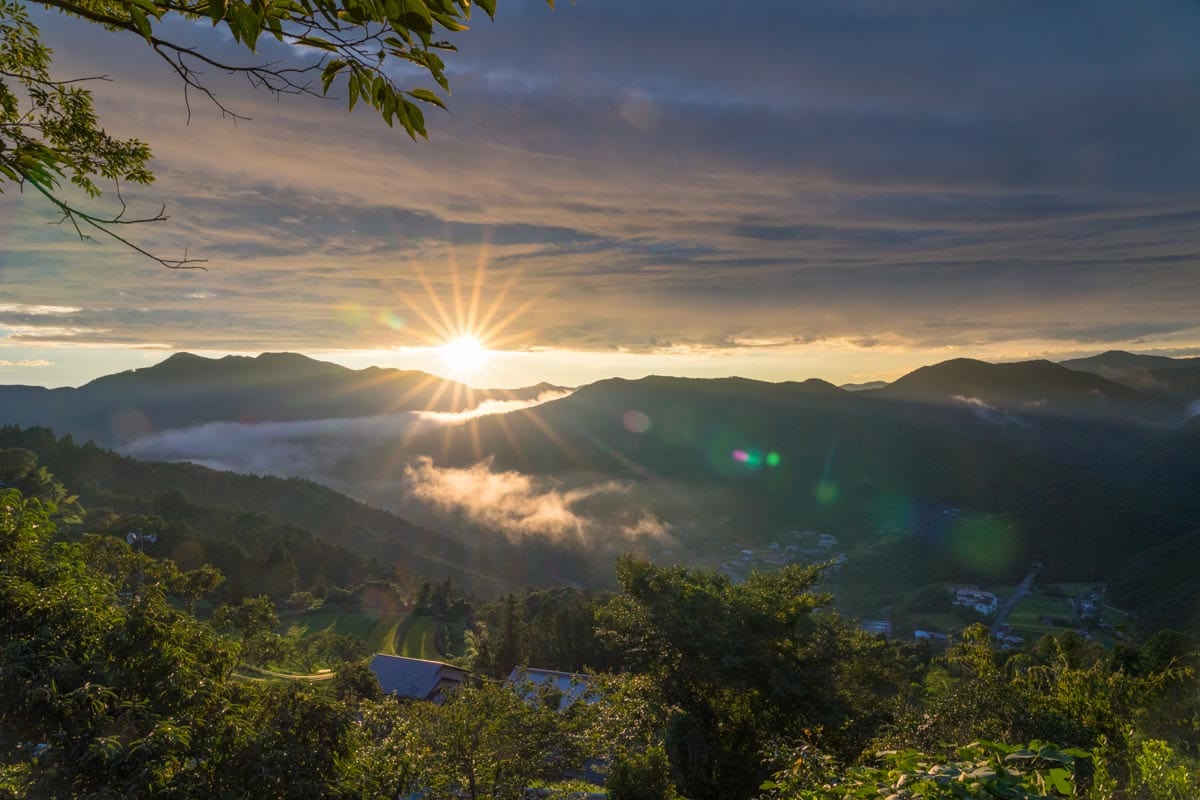
Takahara is a small ridge-top village along the Kumano Kodo pilgrimage route and it has the most beautiful views of the mountains.
Most mornings, before the sun has fully risen, all the mountains are shrouded in mist and this is what the region is famous for. Nothing quite beats watching the swirling mist as the sun finally breaks through bathing the mountains in golden sunlight. All made better with a cuppa coffee of course.
In a country that’s famous for tranquil settings, this is probably the best of that I came across in my two week itinerary of Japan and I really can’t recommend this place enough.
Where to stay in Takahara – Takahara Lodge
Kumano Kodo
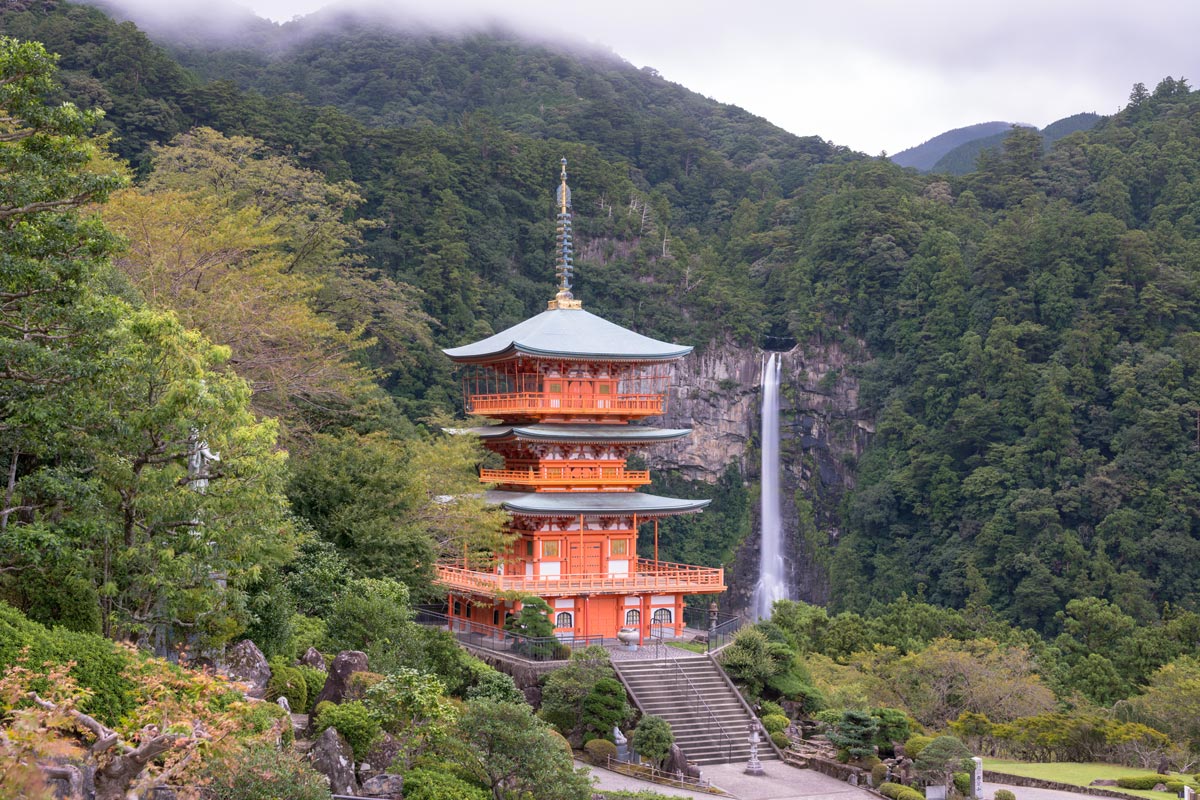
There is a reason why the Kumano Kodo trek is up there with the best in the world – it is absolutely stunning on every single level.
The Kumano Kodo is a 70km 5-day pilgrimage taking you through the most beautiful countryside in Wakayama.
The Kumano Kodo is the holiest and most sacred pilgrimage in Japan, one which was once only reserved for emperors and samurai. Being a bit of a history buff, I loved that I actually walked the same route as the old Japanese emperors centuries before me.
I won’t go into the details as I’ve written a longer blog post about the Kumano Kodo, so if you’re interested then click-through and check it out – The Definitive Guide to the Kumano Kodo Trek in Wakayama, Japan.
Also, if you’re looking for a very different yet traditional place to sleep then think about a Japanese temple stay – this post will tell you all about it!
Trying tuna at Bodai
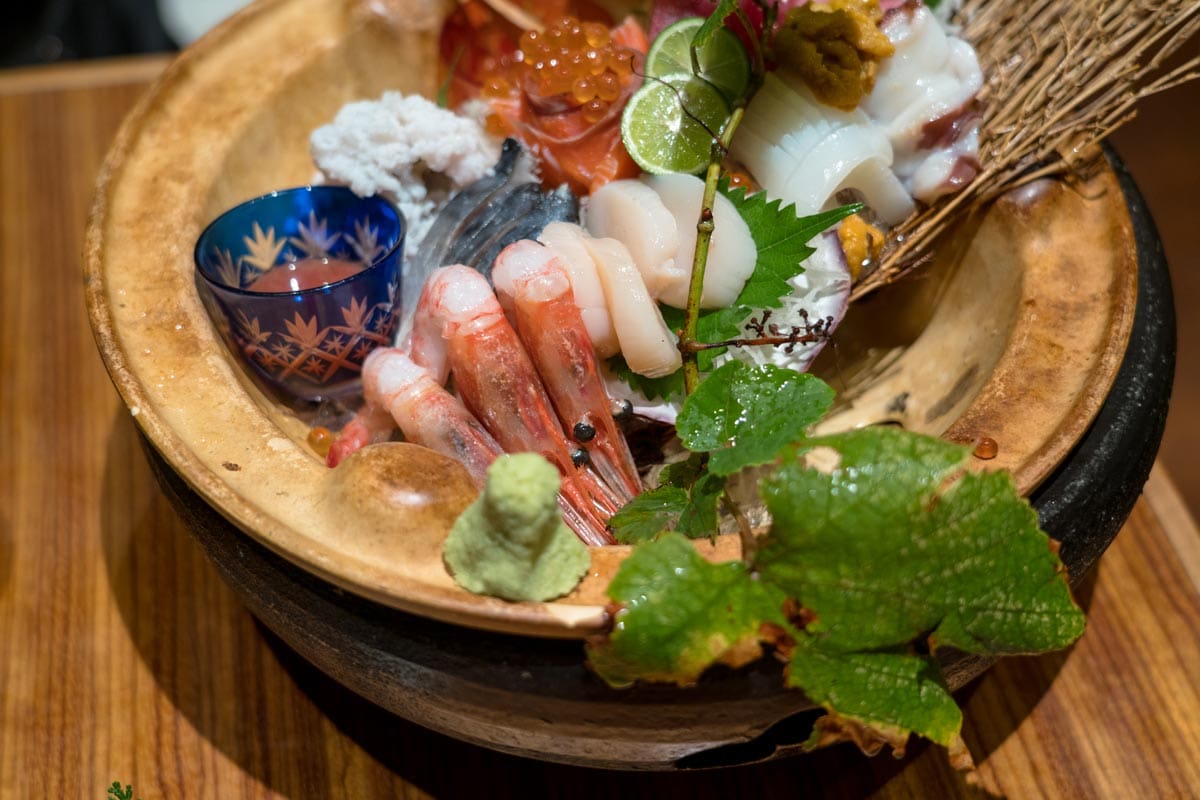
The town of Nachikatsuura on the coast is renowned for its fresh fish and the tuna from this region is considered to be the best in Japan.
I really wanted to try lots of different types of fish and tuna so I went for the sashimi platter at Bodai. This came with so many different types of fish and seafood – it really was a feast from the ocean.
The fatty tuna was really nice and meaty, but I think the sea urchins were my favourite flavour. I could eat this sashimi platter all day long and it really doesn’t get fresher than this.
Osaka – days 13 & 14
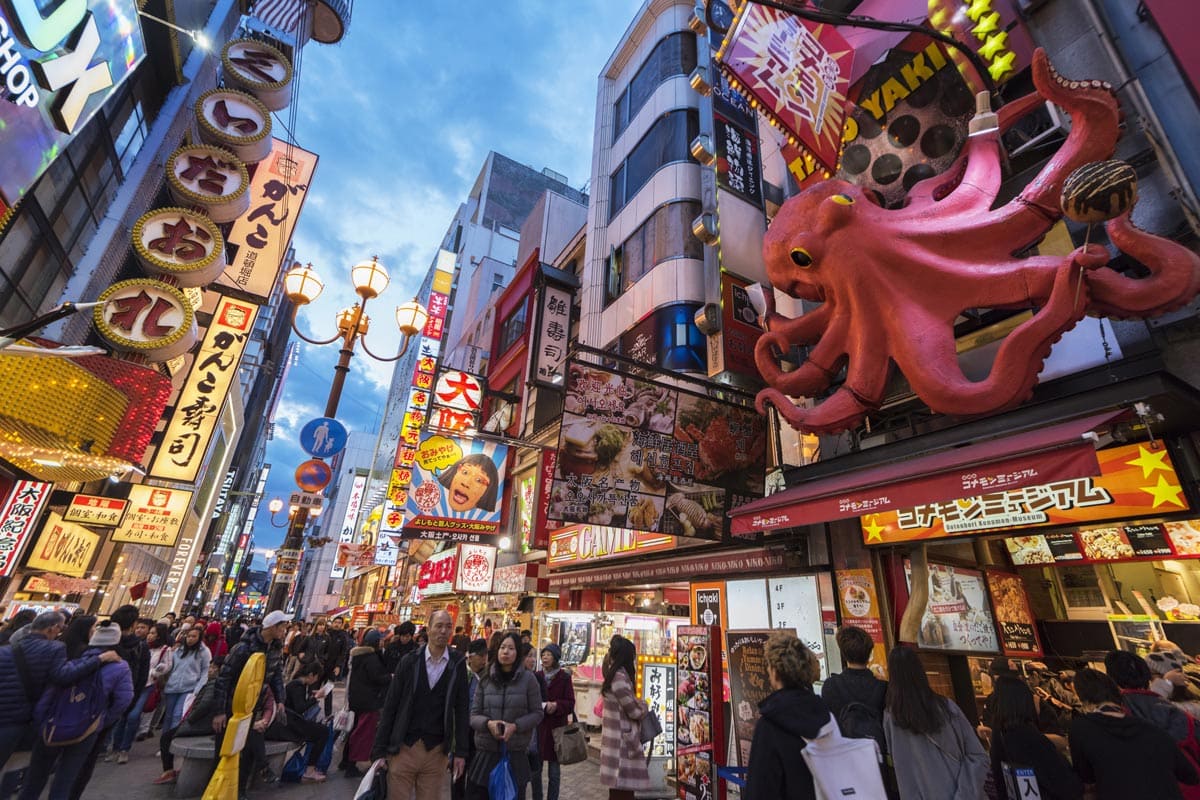
Despite being Japan’s third largest city, Osaka is a lot smaller and more manageable than Tokyo and it’s packed full of fun activities for tourists.
Even though Osaka isn’t the prettiest city, it is very bright and colourful with lots of dazzling neon signs and over-the-top shopfronts strumming up business.
One of the things Osaka is really famous for is food. The city’s unofficial slogan is kuidaore (‘eat until you drop’) which means everyone’s looking to have a good time in the evening. I don’t think I had a bad meal in Osaka!
Also, one of the best day trips from Osaka to Kyoto. If you’re heading there, check out this amazing blog post on unique things to do in Kyoto. This will really inspire you to visit Kyoto!
Universal Studios, Osaka
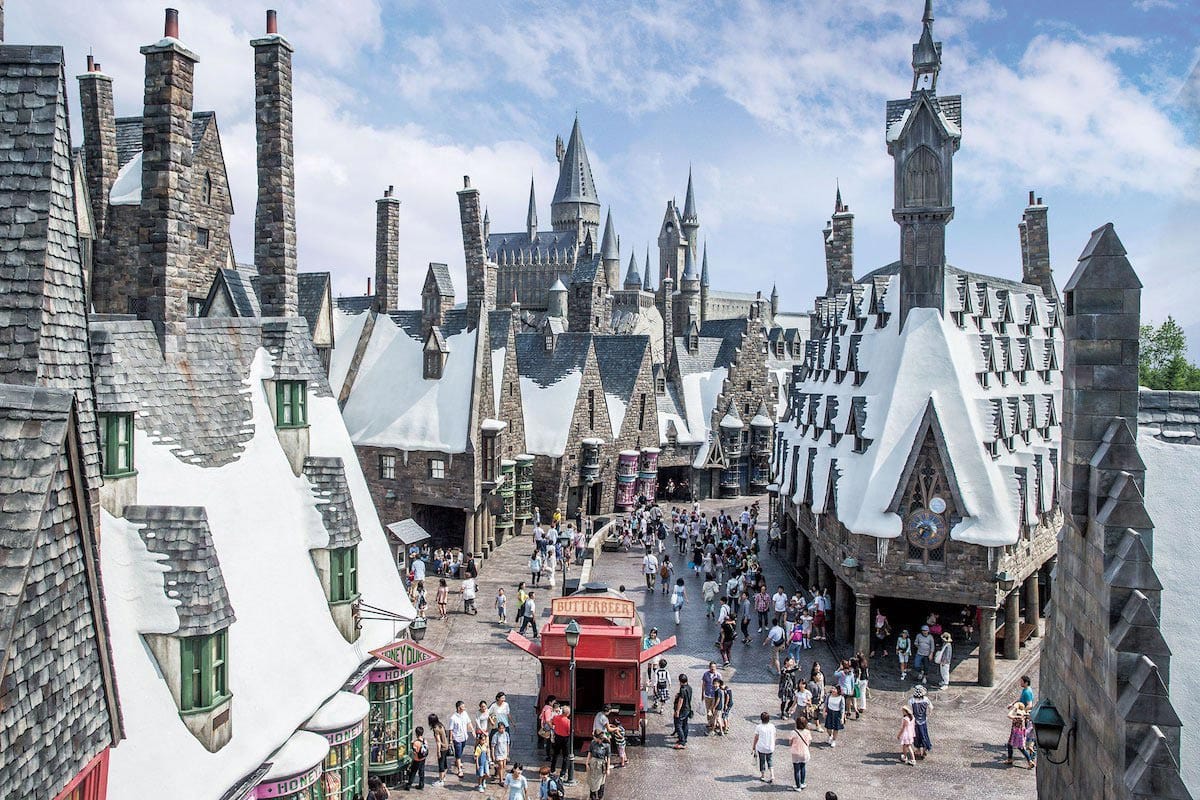
If you’ve had enough of nature and landscapes then get back to reality with a bang at Universal Studios.
This is one of the top things to do in Osaka, and even though it might not be a cultural activity it is so much fun. ‘The Wizarding World of Harry Potter’ is the best section and some of the rides are so much fun. It really makes you feel like a big kid again!
Osaka Castle
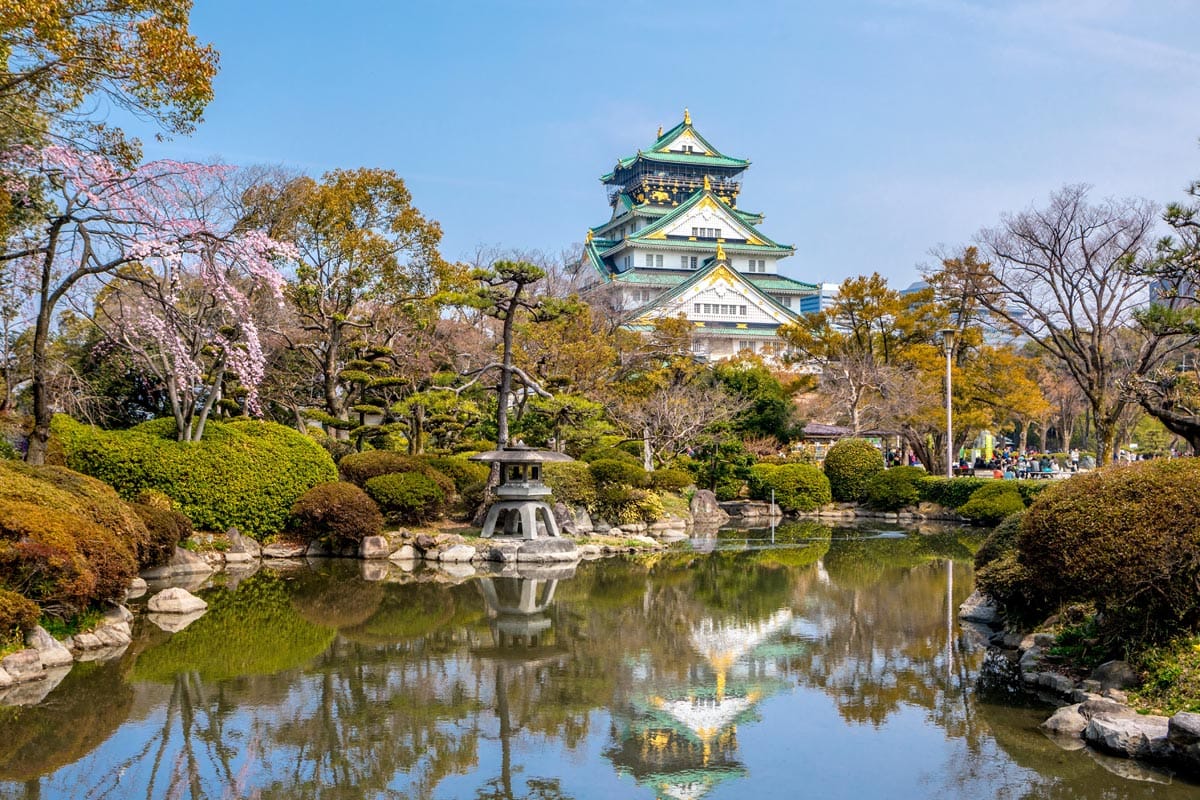
The city’s most famous landmark is Osaka Castle. Built by the regent Toyotomi Hideyoshi in 1583, this is a remarkable piece of architecture and is still so elegant.
It’s really recommended that you spend the afternoon walking around the gardens as they are just so beautiful. Also, Osaka is particularly popular during cherry blossom season.
Where to stay in Osaka – Mitsui Garden Hotel Osaka Premier. You can check out some of the best hotels in Osaka here.
Japan packing list
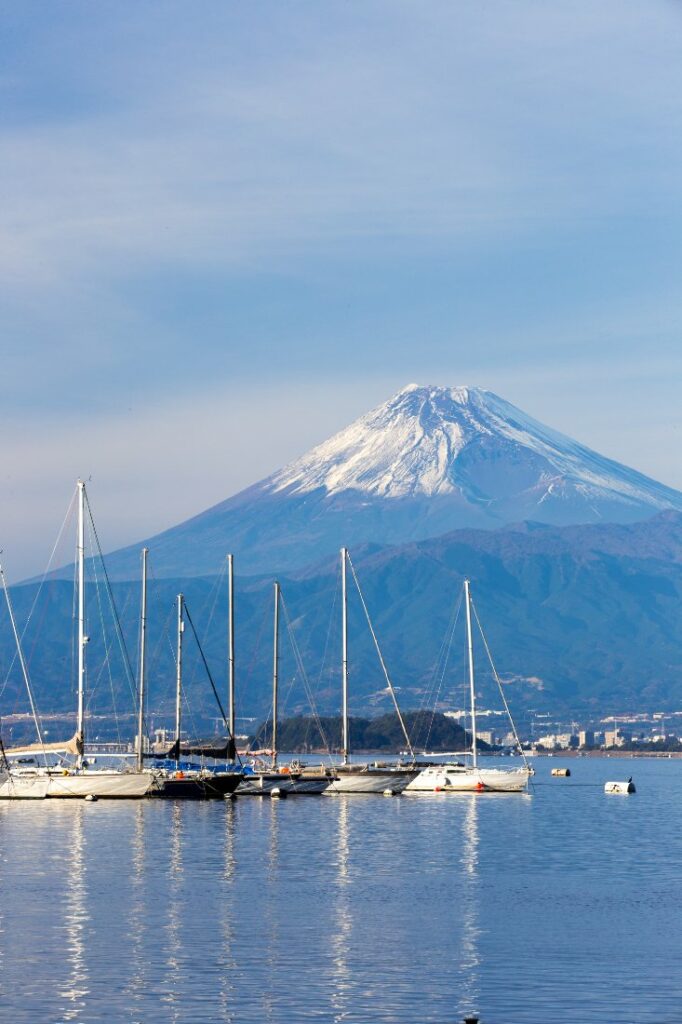
As you can imagine, I travel a lot. It comes with the territory of being a travel blogger! That being said, there are some things that I now can’t travel without. If you’re planning your Interrail itinerary, I’d really recommend taking these items with you:
- Sunglasses: Mens | Womens – These are an absolute must as soon as you step off the plane, holiday mode very firmly on!
- Cool felt hat – I always love travelling with a hat these days, especially during summer when the sun’s out.
- Rain jacket: Mens | Womens – Sorry guys, but it’s always a good idea to travel with a pac-a-mac or rain jacket that packs down small. Fingers crossed you won’t need to use it.
- Bum bag – Very easy and simple for wandering around a city and it means you can leave a big bag at the hotel room.
- Sleep mask – 100% take this with me on every trip.
- Ear plugs – Even if you’re staying in a 5* hotel, you might need ear plugs.
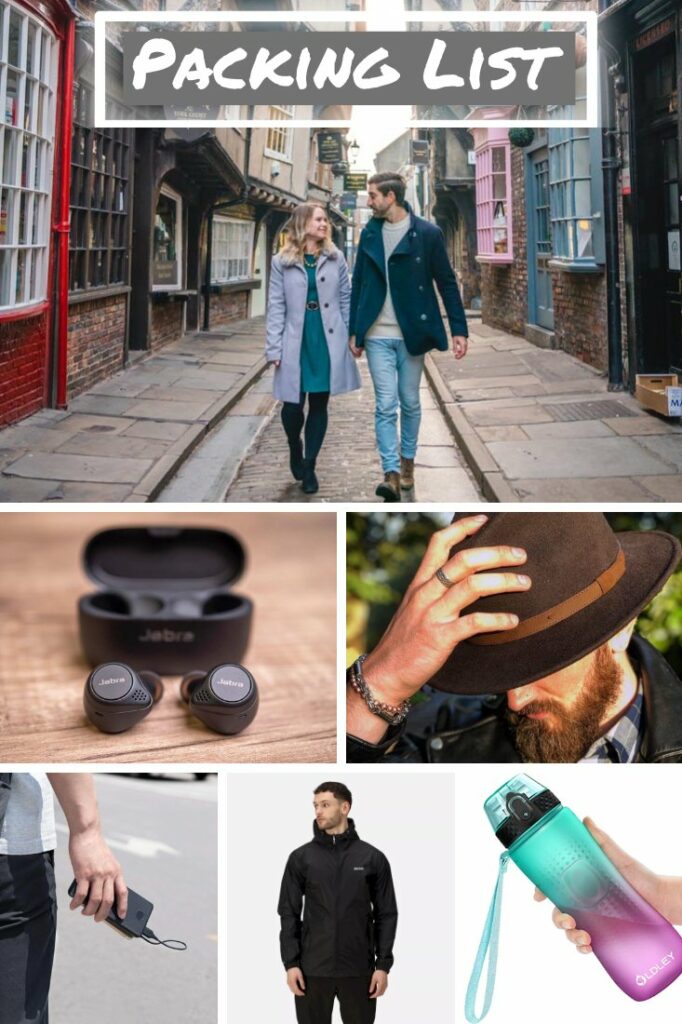
- Water bottle – I am a water bottle convert and I barely leave the house without one now. This is a great water bottle with a built in straw – it’s surprisingly handy!
- Waterproof phone carrier – Another game changer. I always use this when I’m on the beach to protect my phone from sand or when I’m kayaking to protect it from water.
- Portable charger – Does anyone travel without these now? This one is my favourite – just make sure you charge it before you get on the plane!
- Jabra earbuds – After trying so many different types of earbuds, these are now my go-to ones. Great for wandering around a city.
- Multi-adapter plug – This is the one item you’re most likely to forget.
This trip was in association with the Japanese National Tourist Office (JNTO), and with Explore Shizuoka, Hot Ishikawa and Visit Wakayama showcasing some of the different peninsulas in Japan. As always, all views and opinions are my own.
Are you planning your own Japan itinerary? If so, what are some of the things you’d most like to do? Let me know in the comments below!
Like this blog post? Then make sure you Pin it!
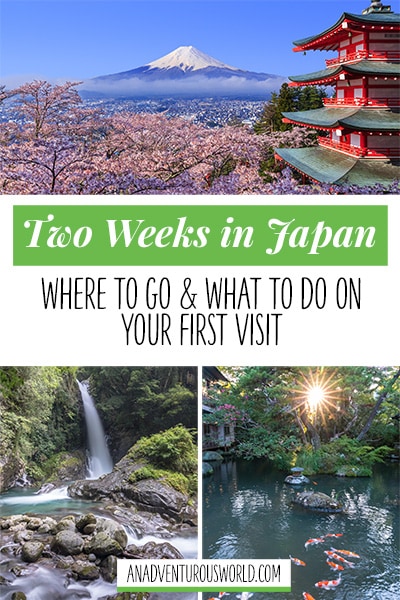

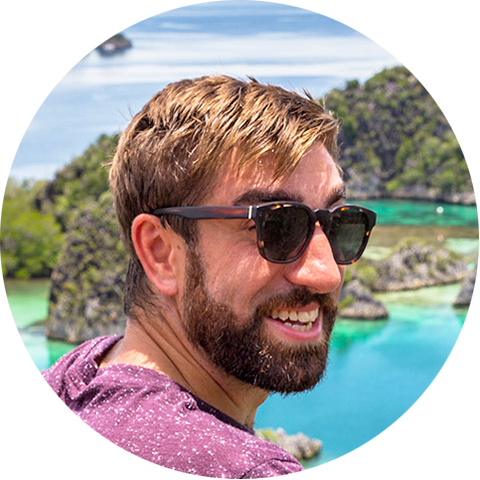
Thanks for sharing this great information.
No worries – I’m glad you found it useful!
Such a fantastic place and pictures you captured in your trip. I am very excited to visit this place… thank you so much for sharing such an amazing post!
Thank you! Japan is such an amazing place – I definitely recommend you visit!
Wow those pics of island are really nice… and it gives a peace of mind to anyone who visits those islands. Mouth watering food and nice pictures.
Thanks very much – I appreciate your comments! The food pics are definitely mouth-watering that’s for sure!